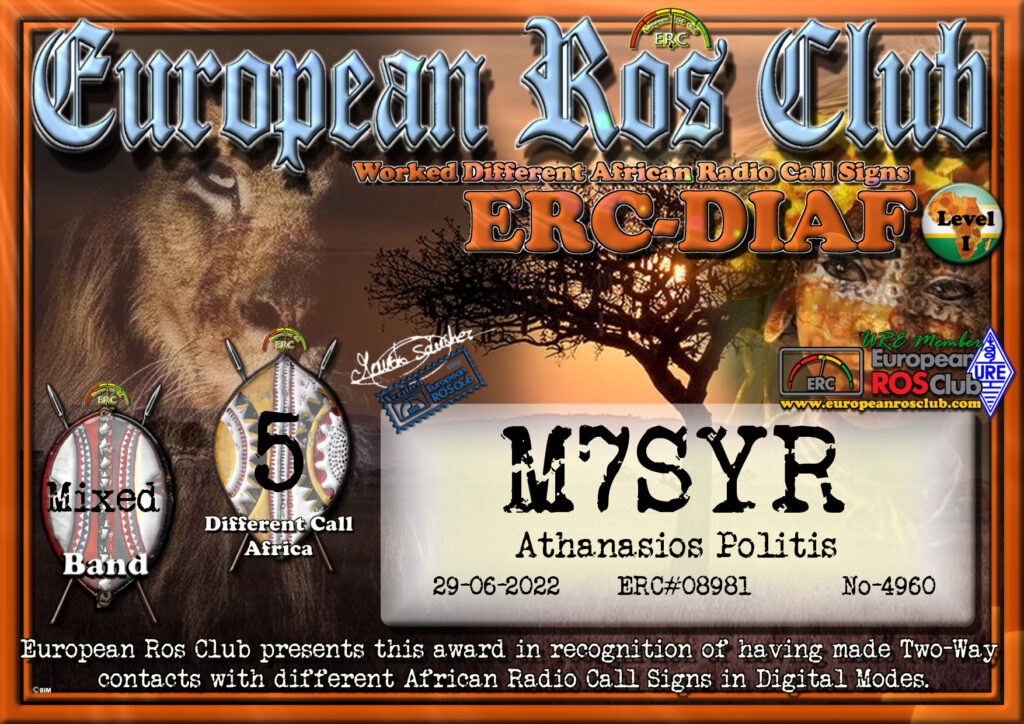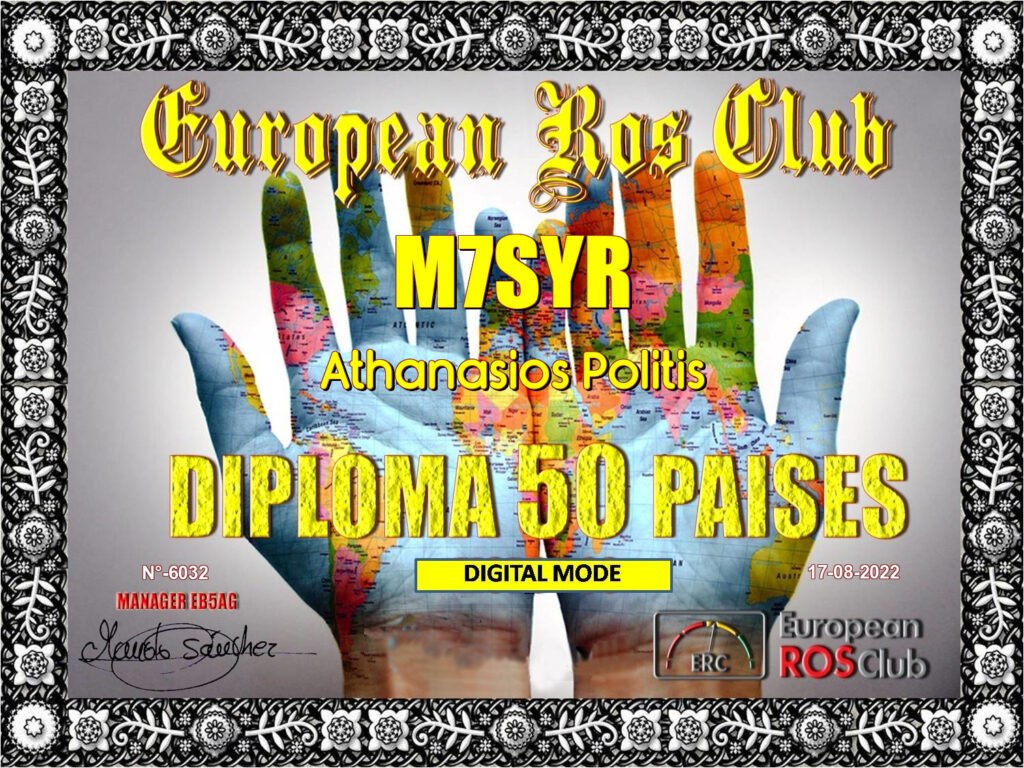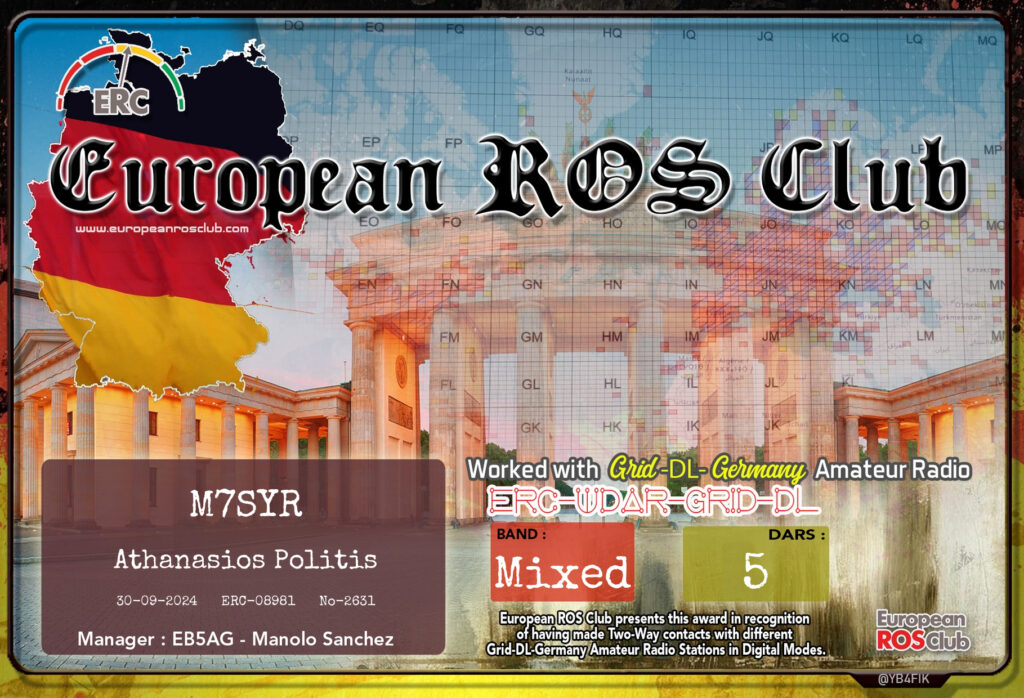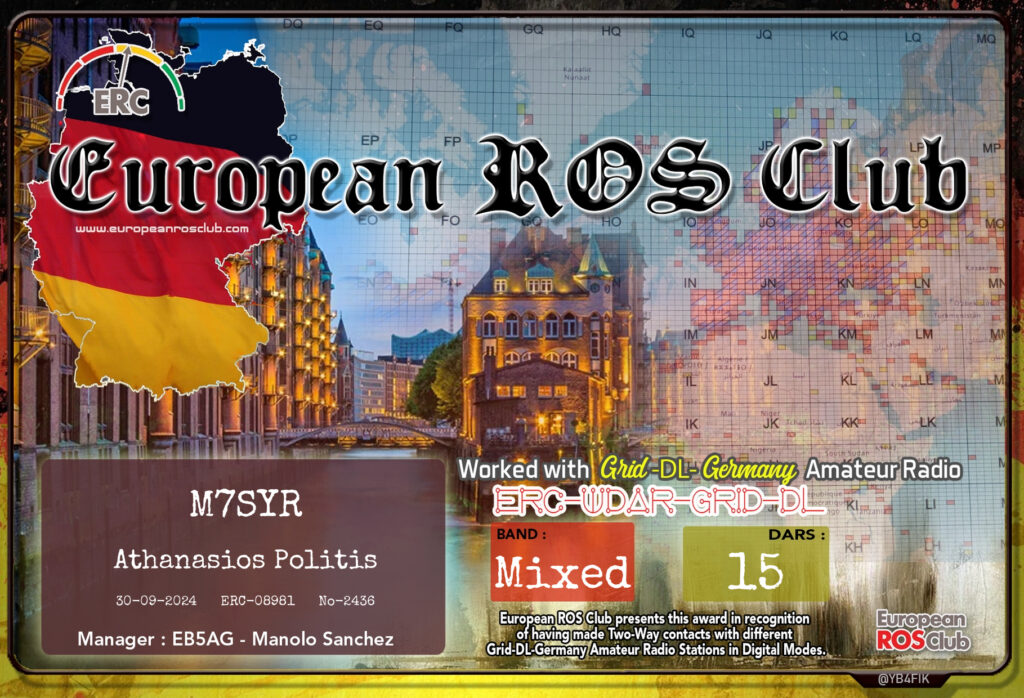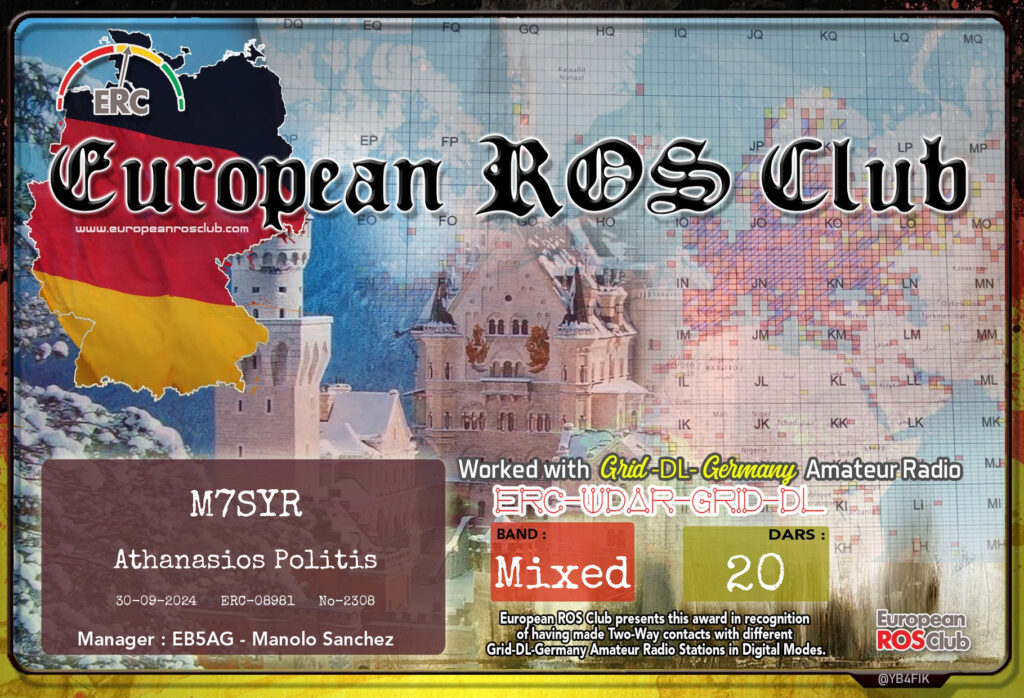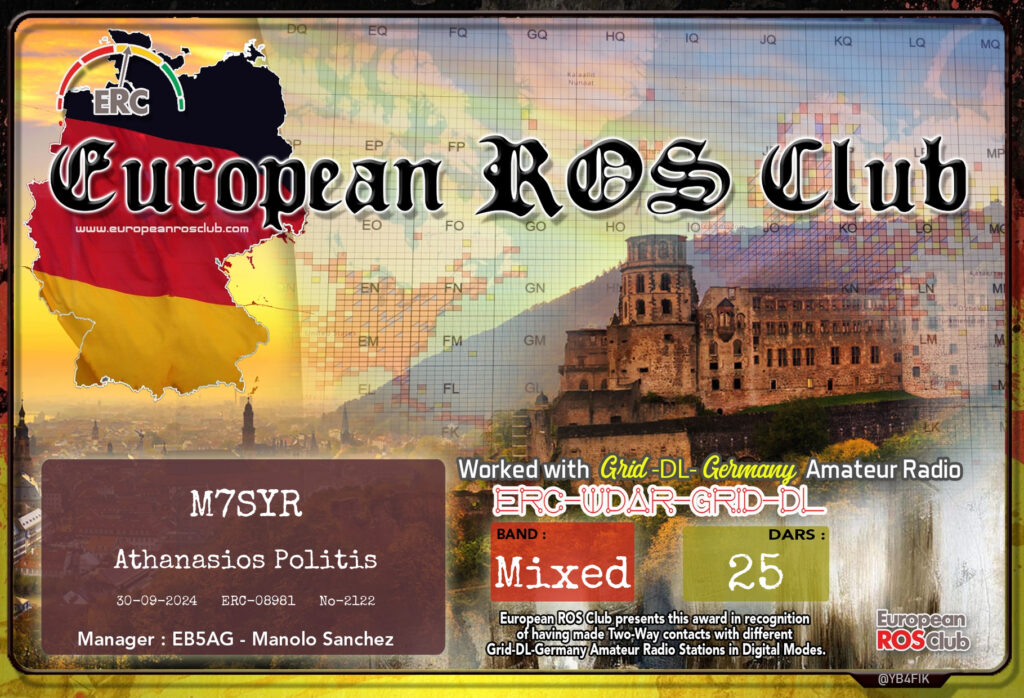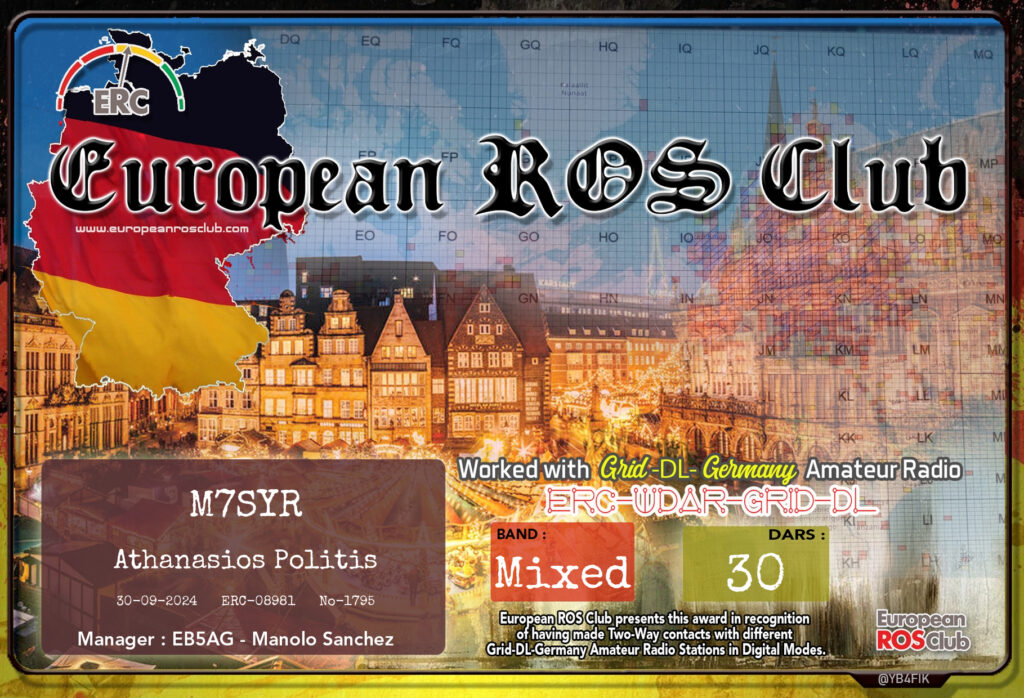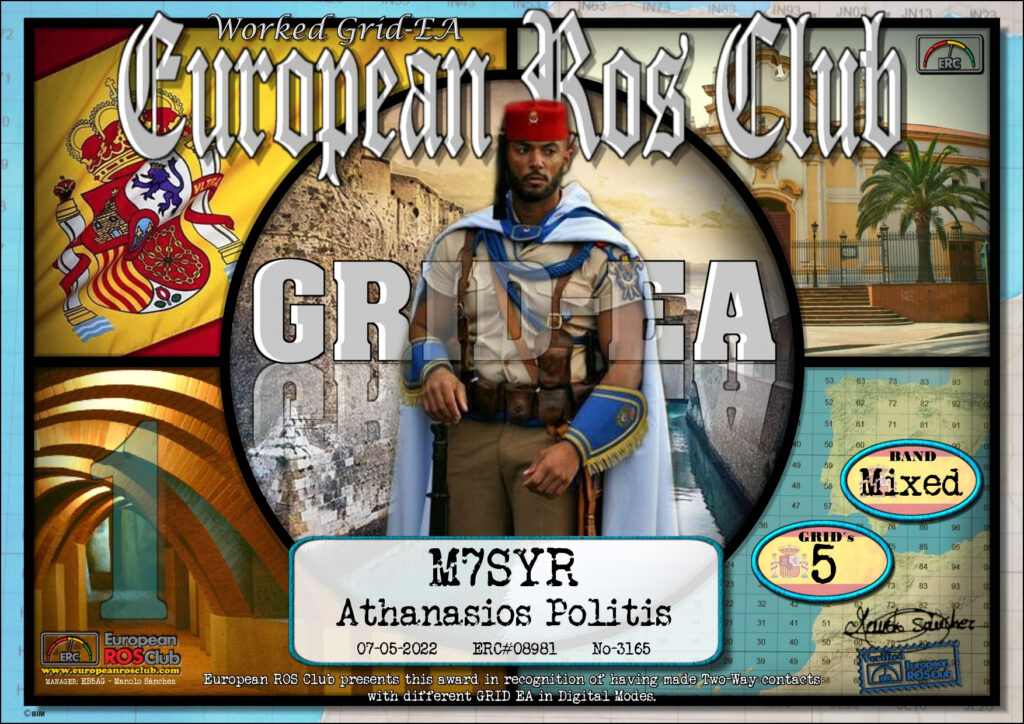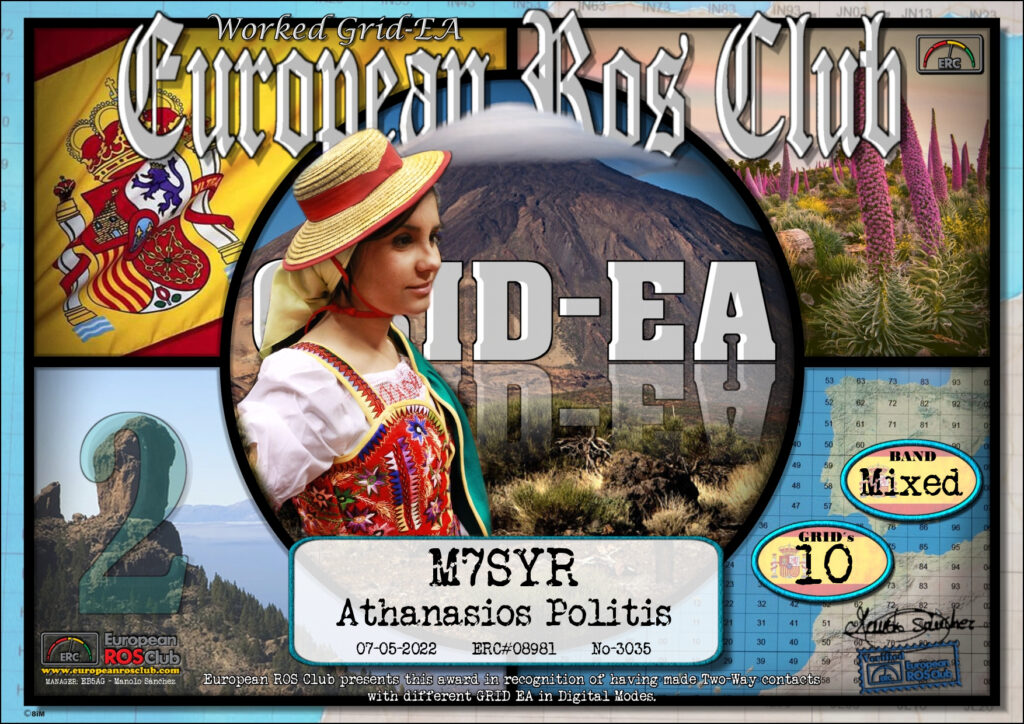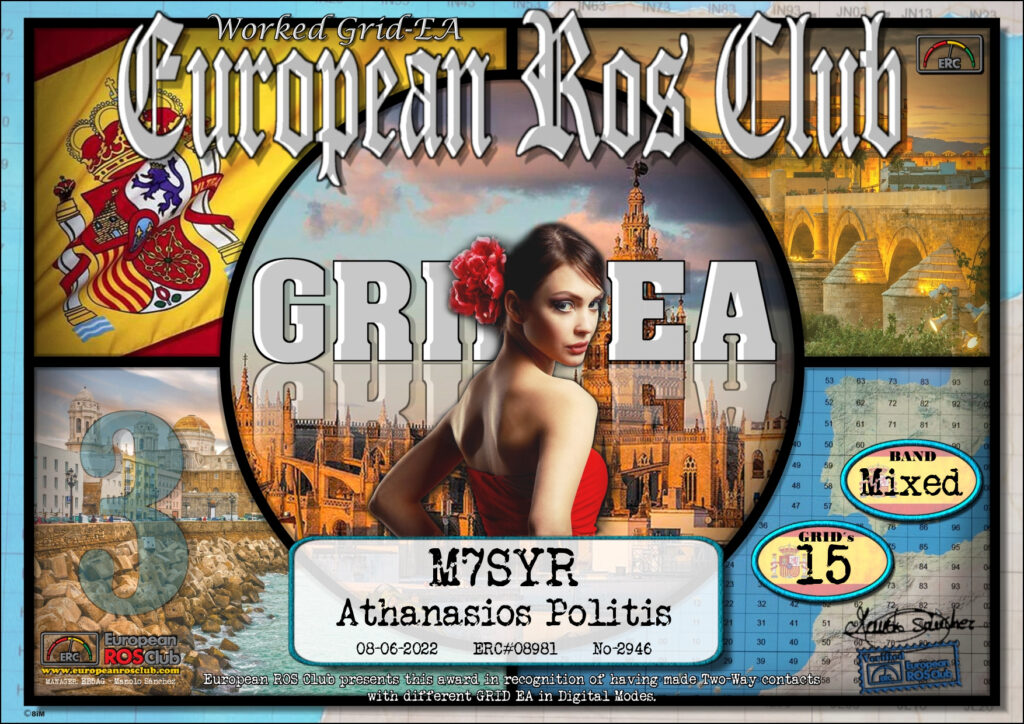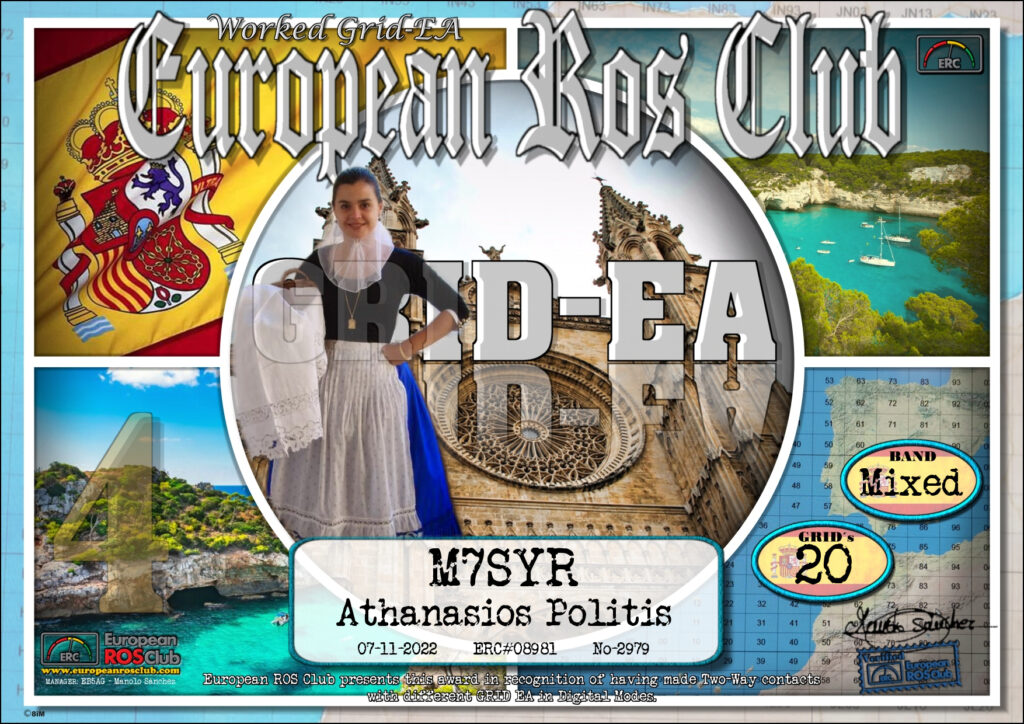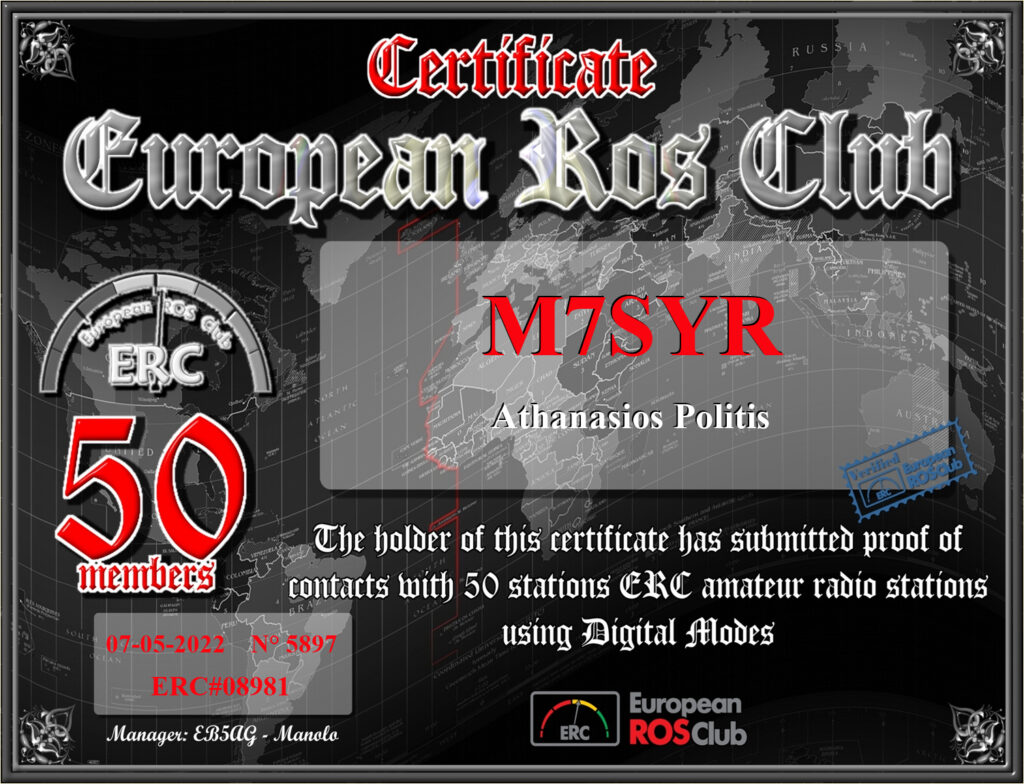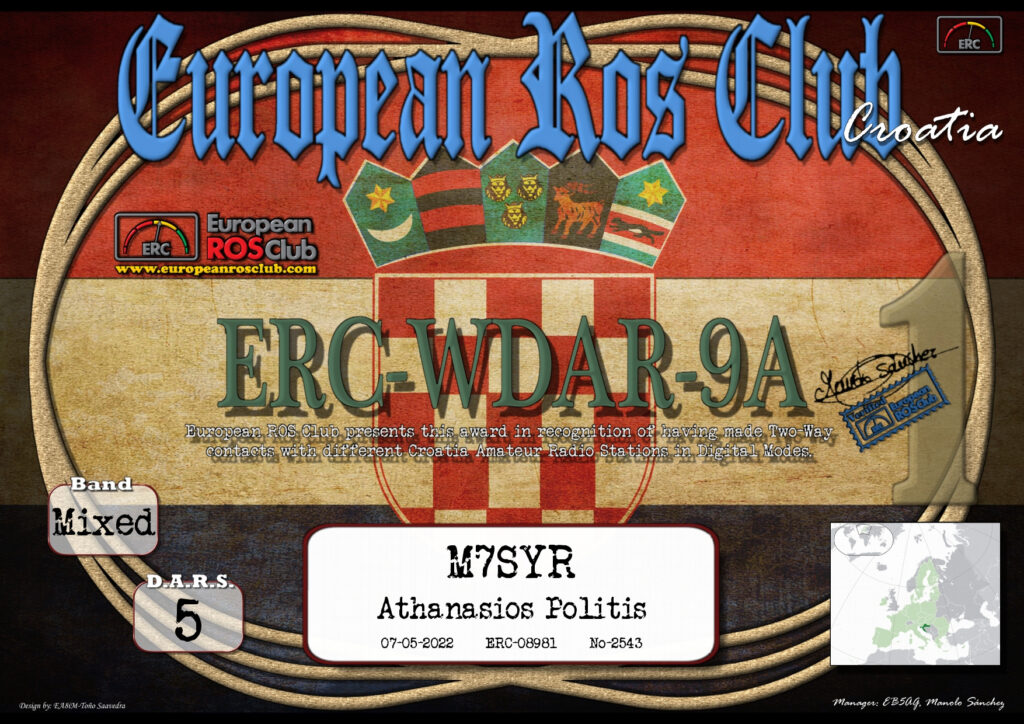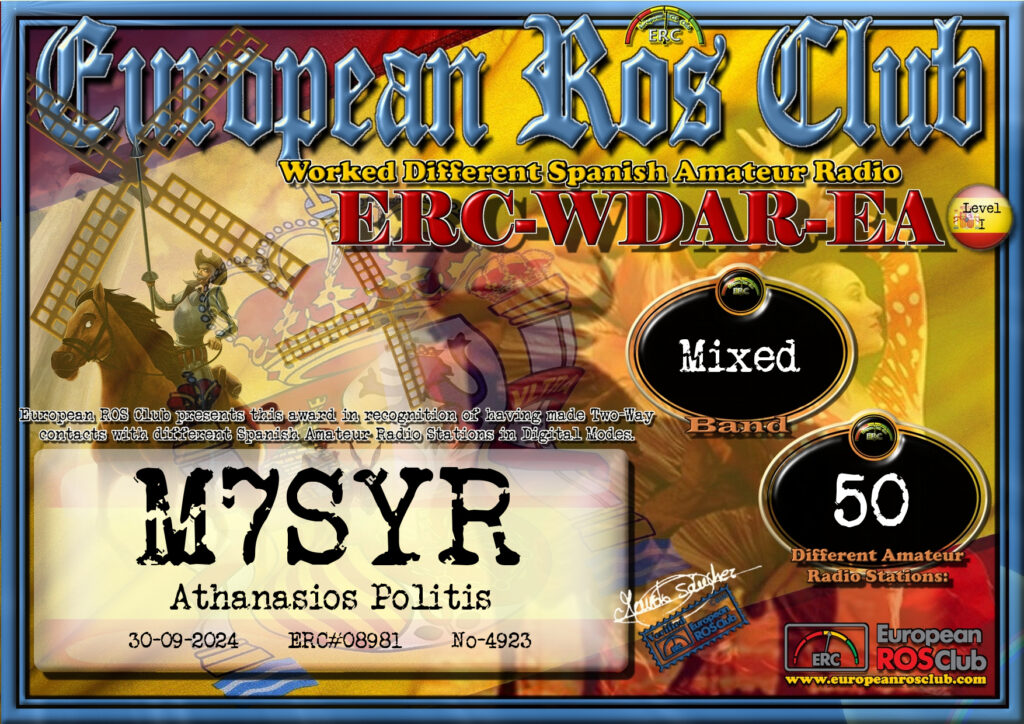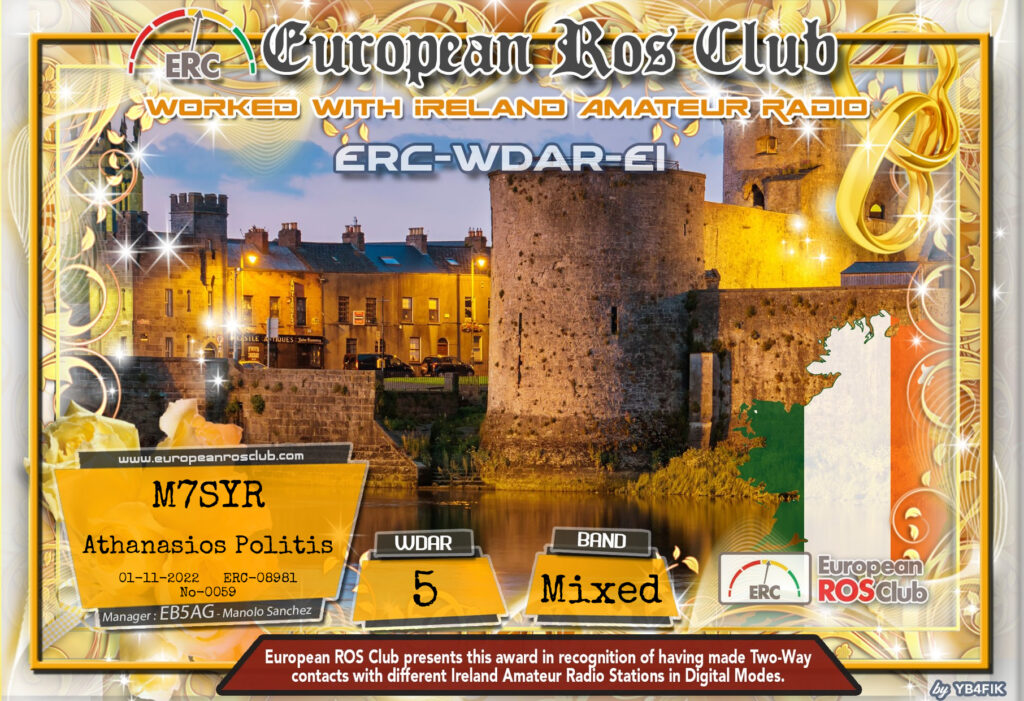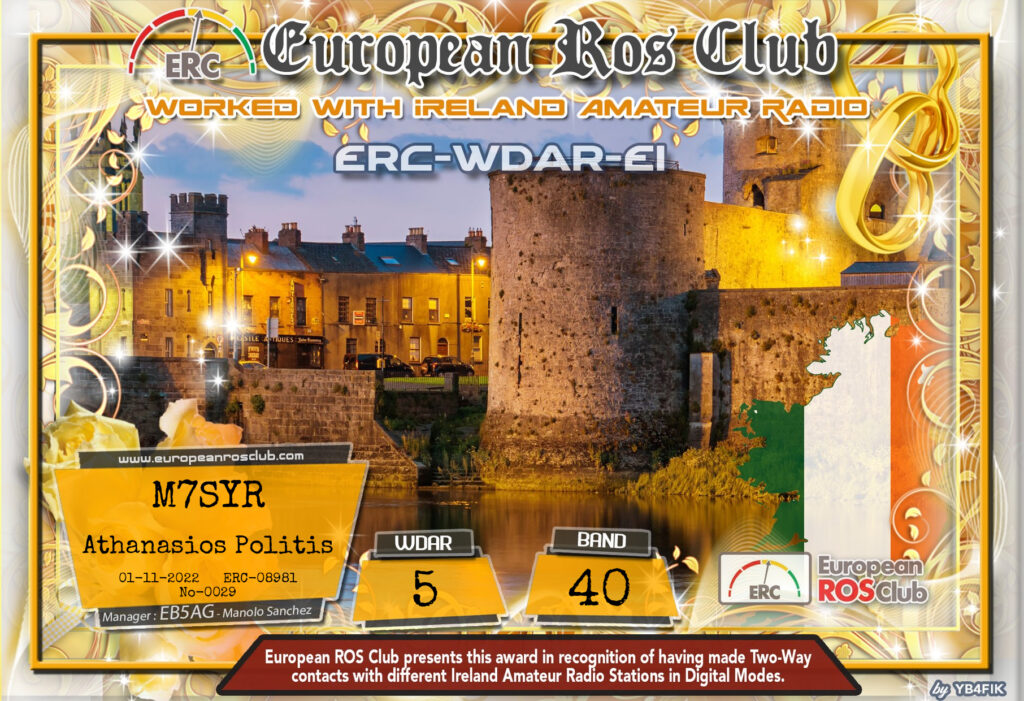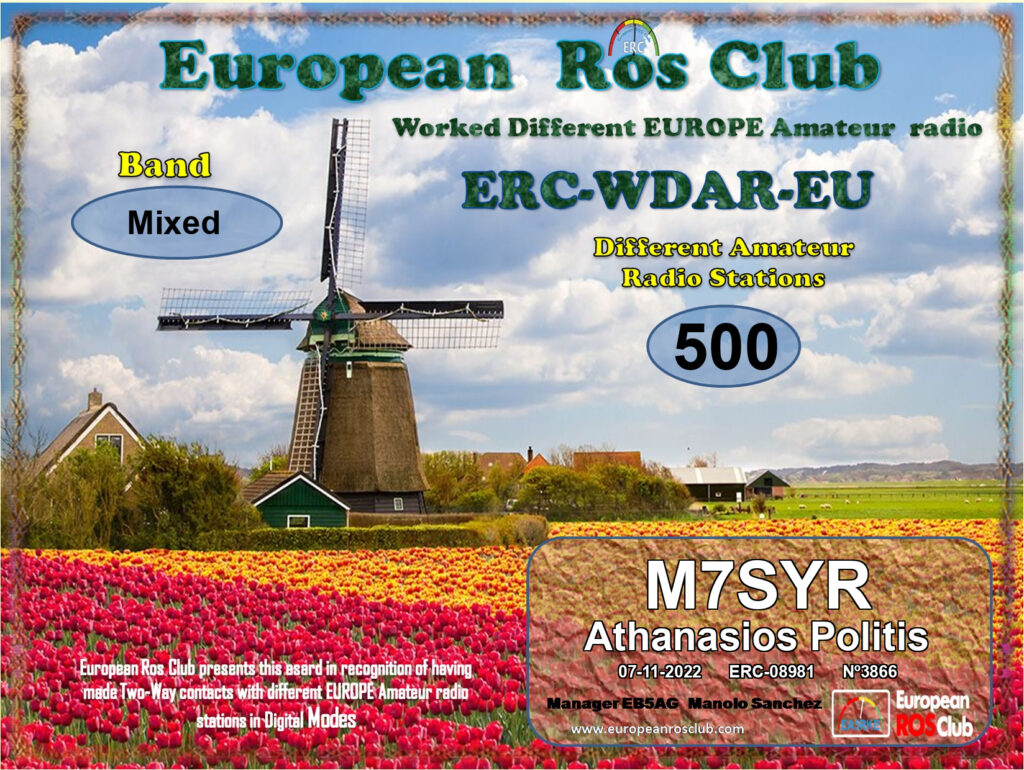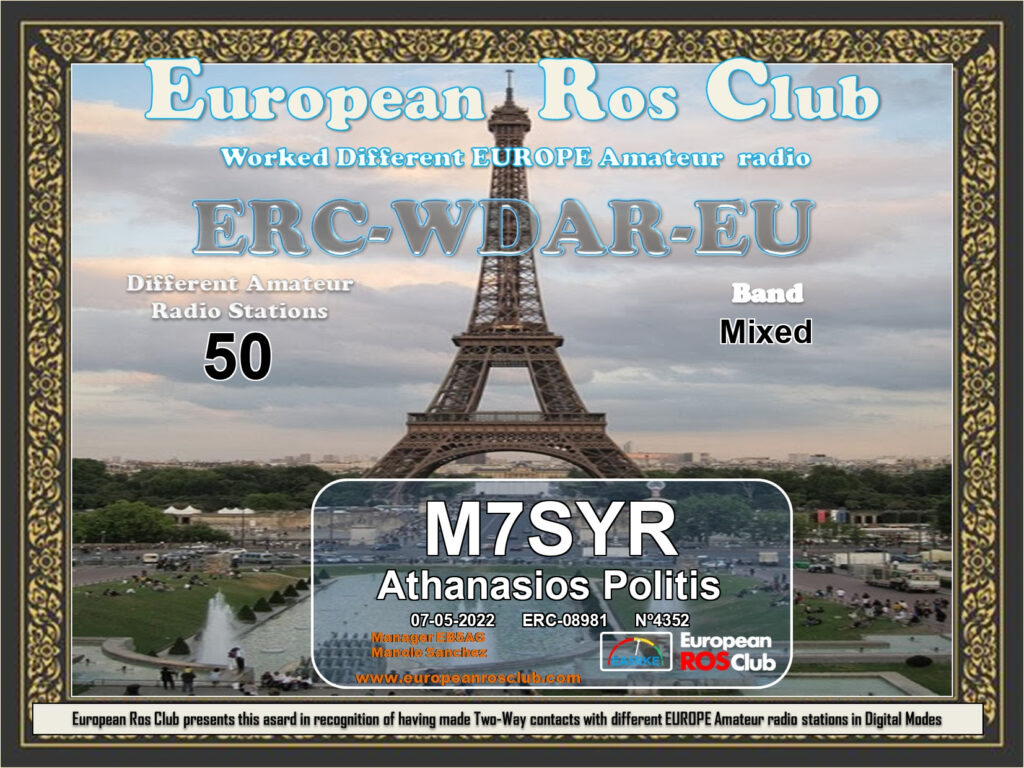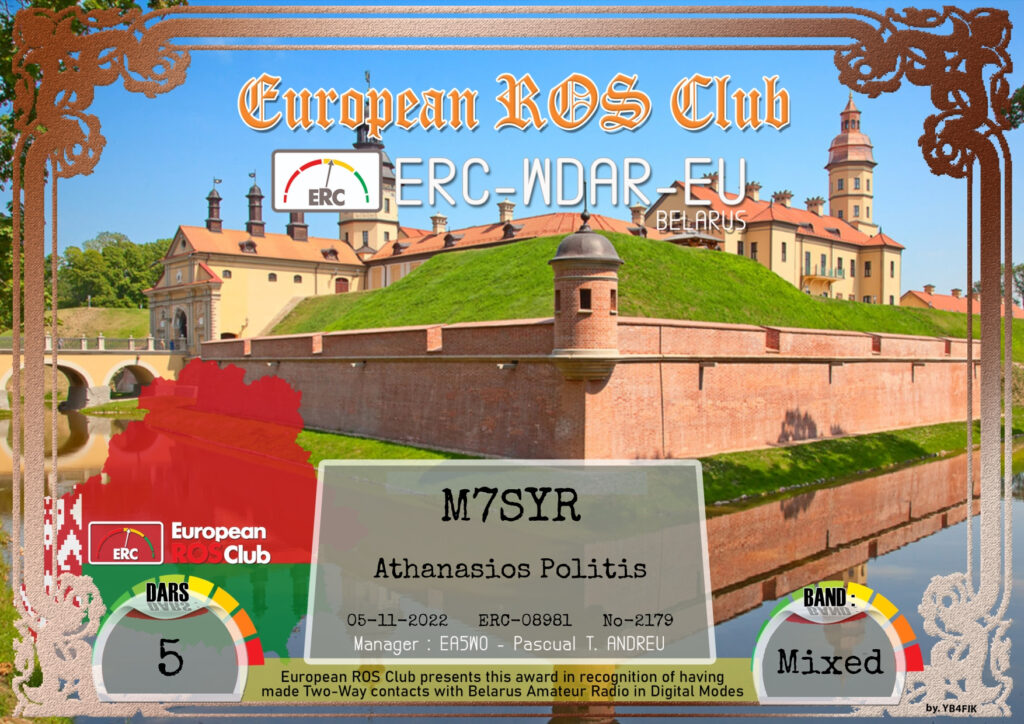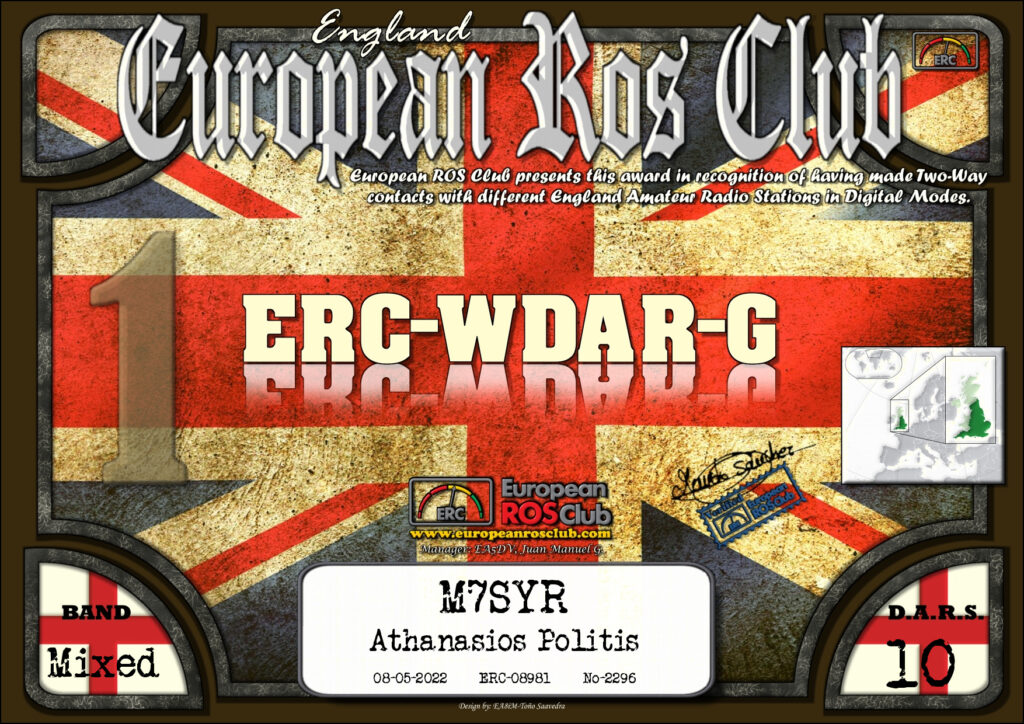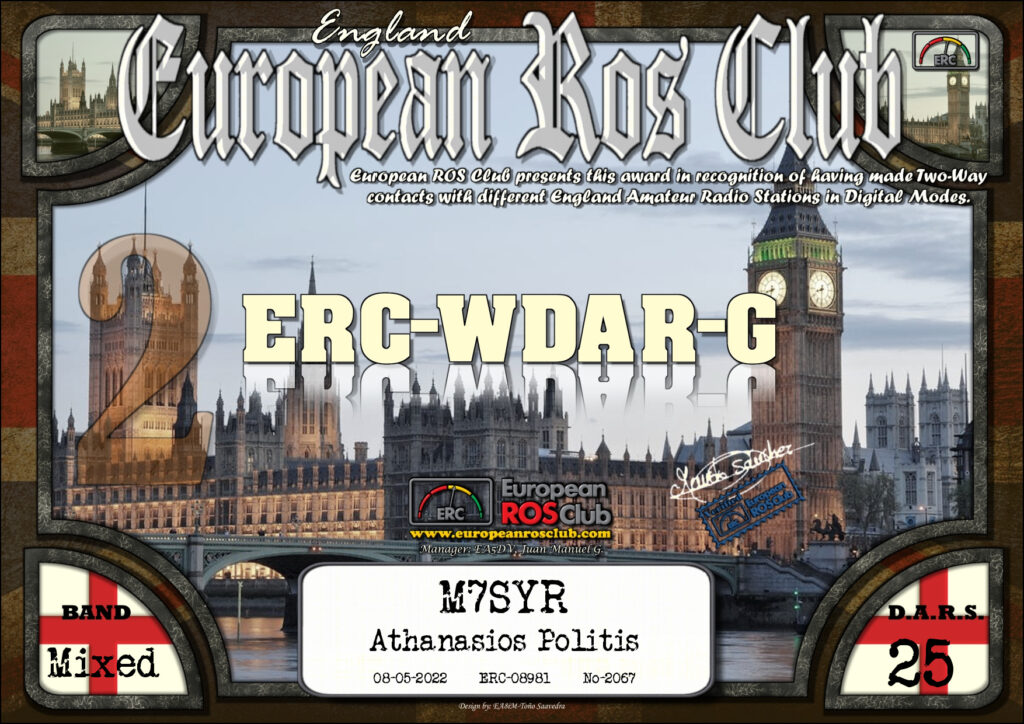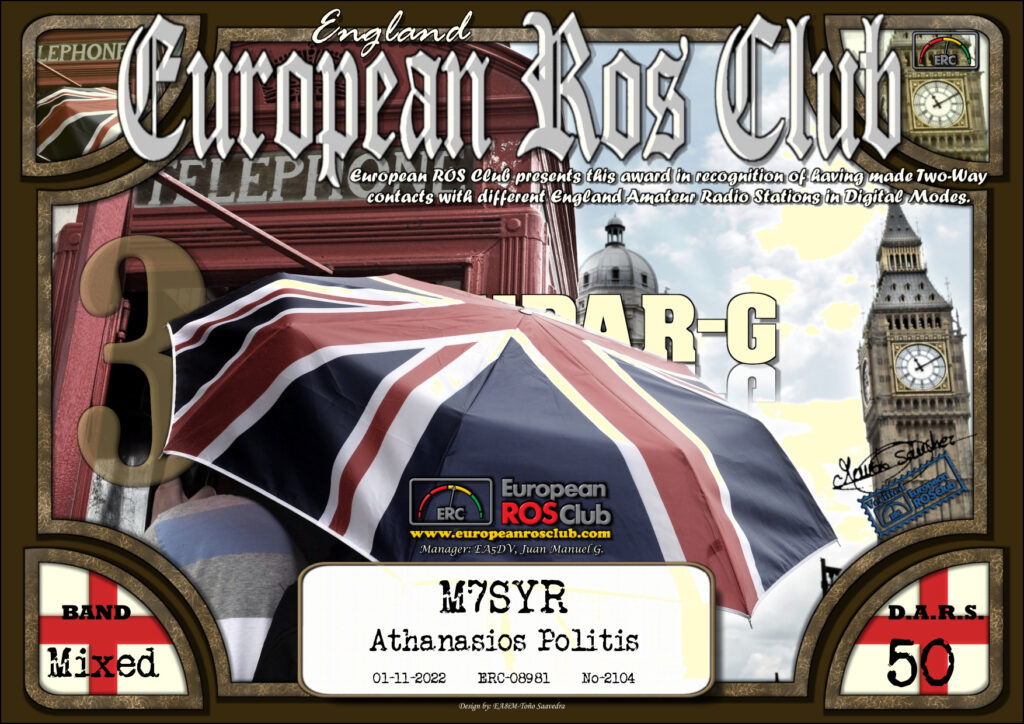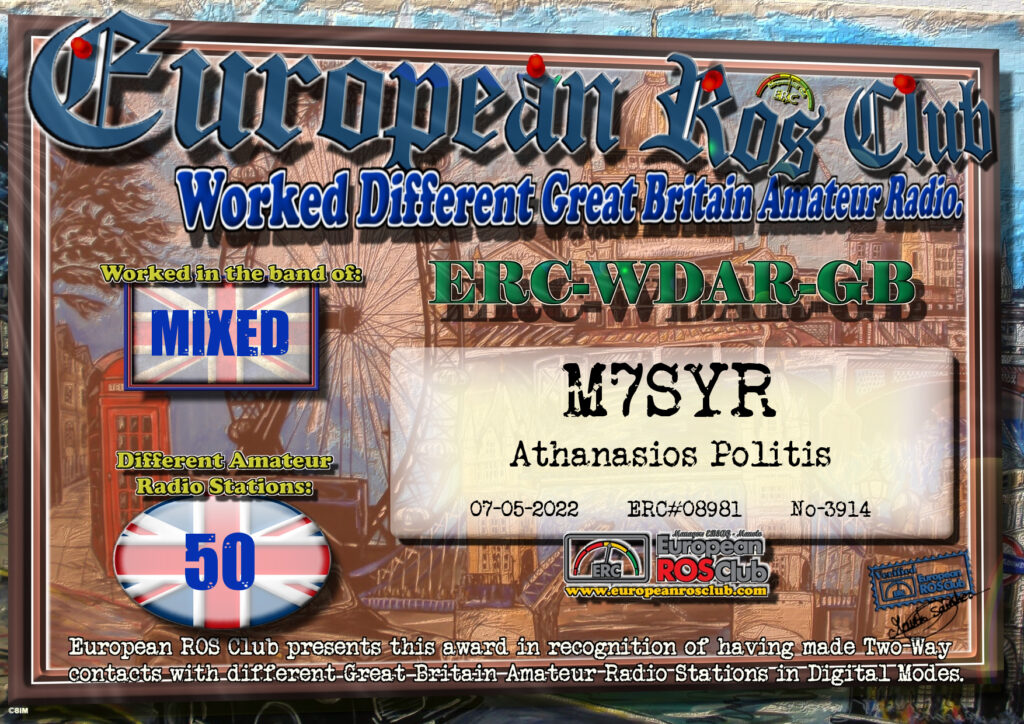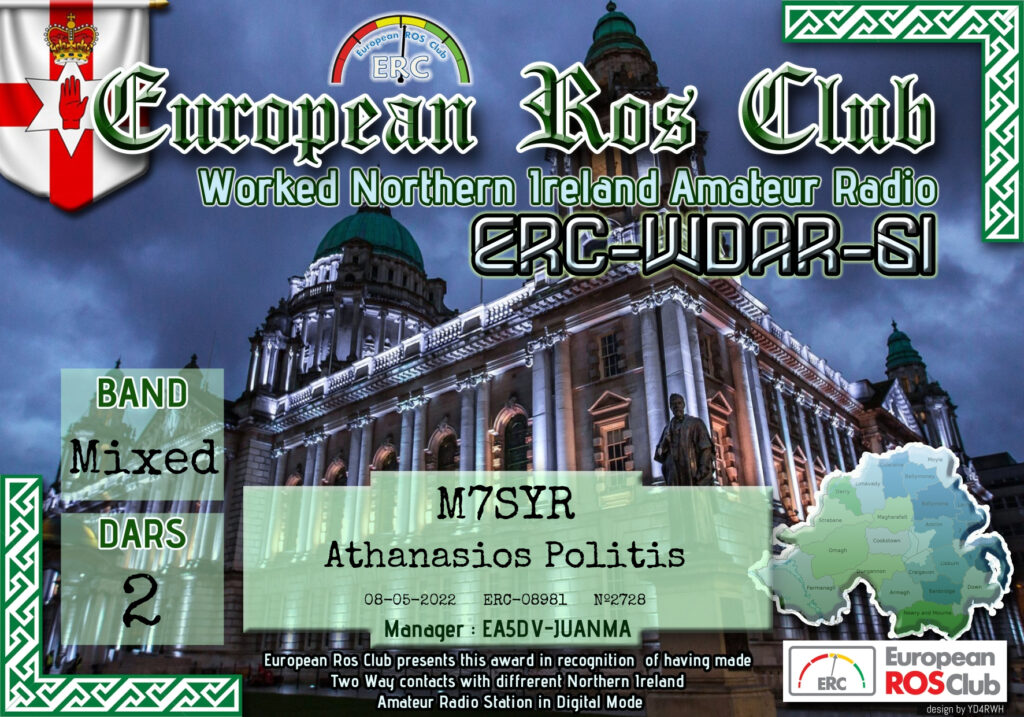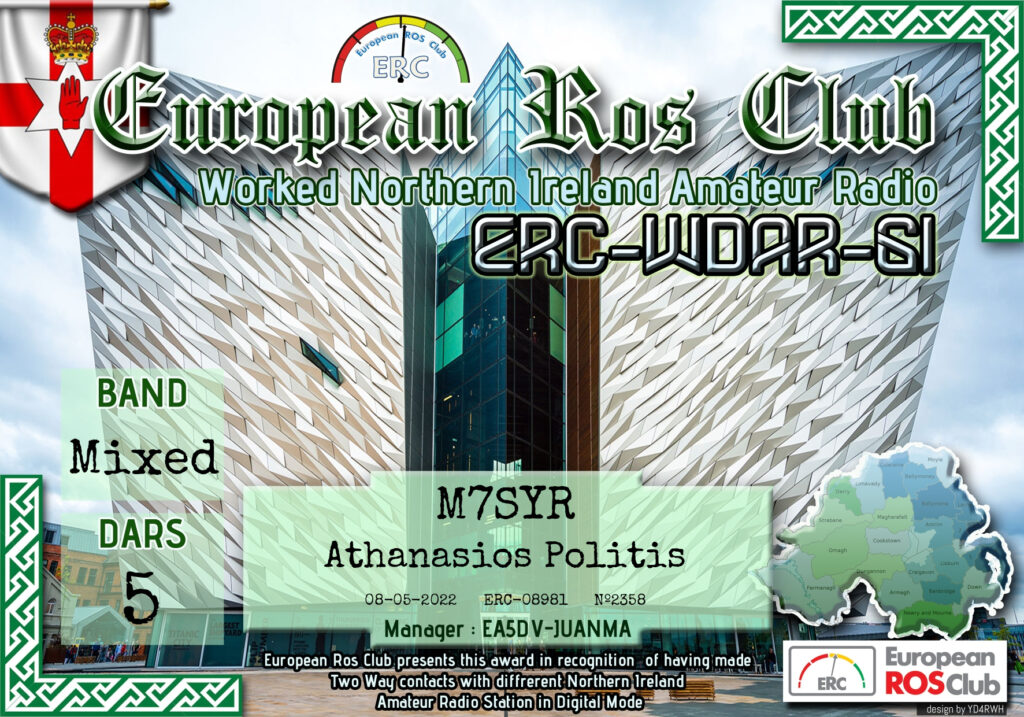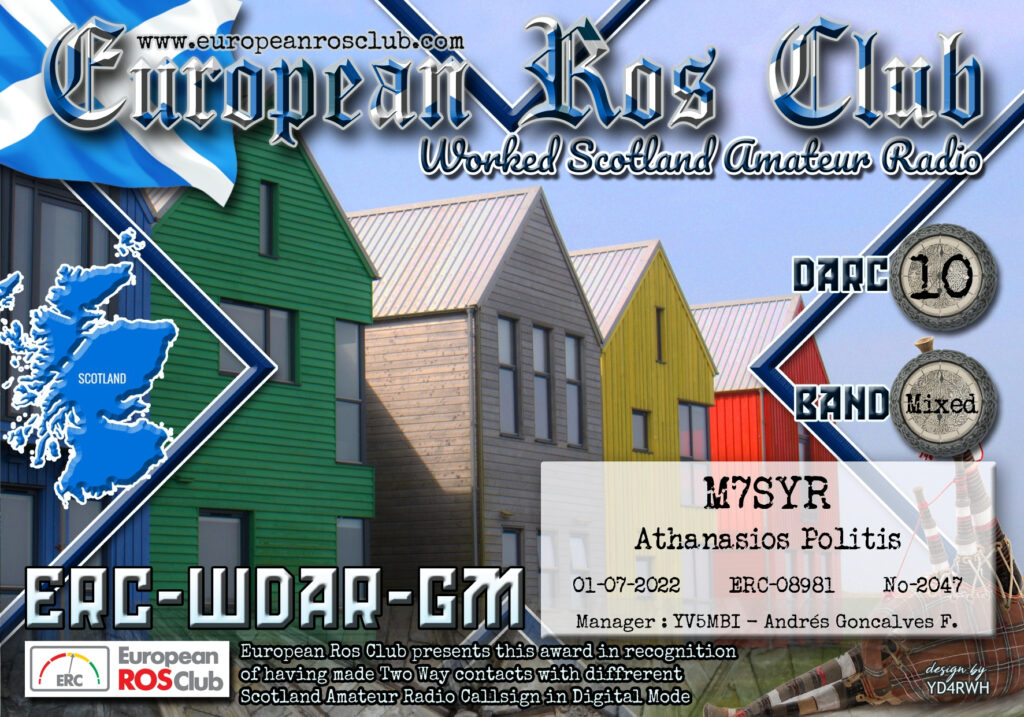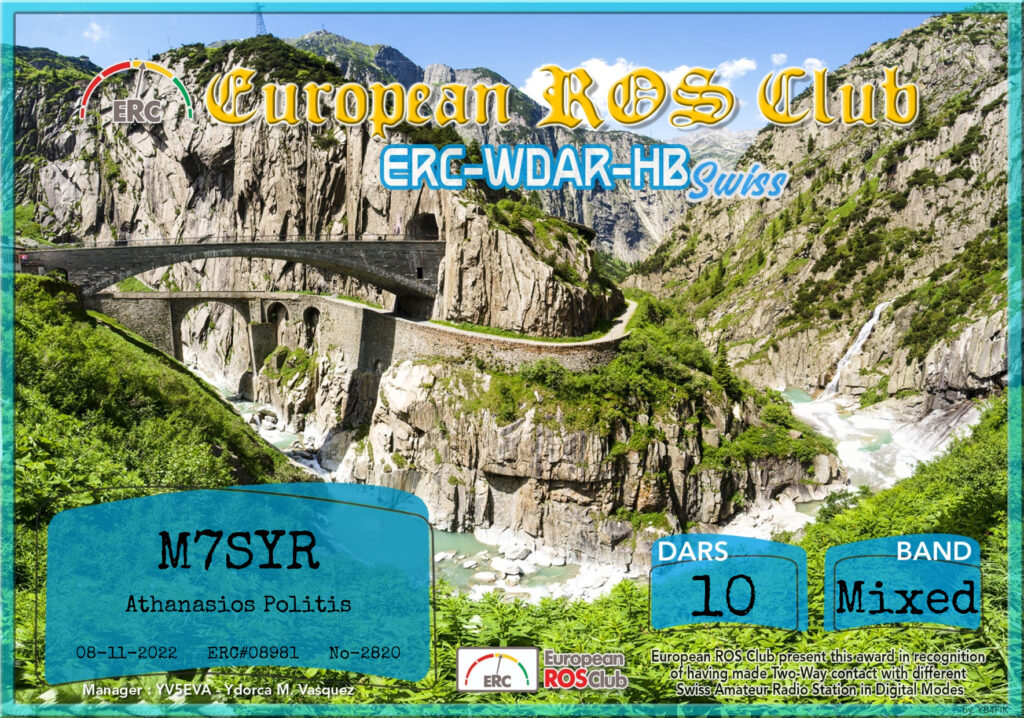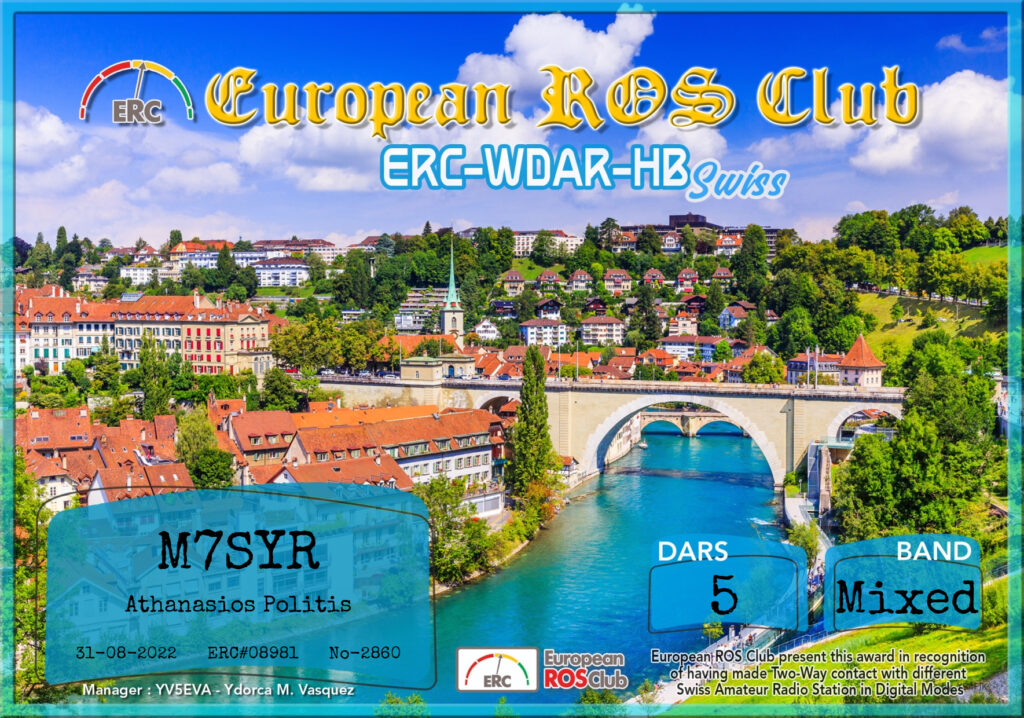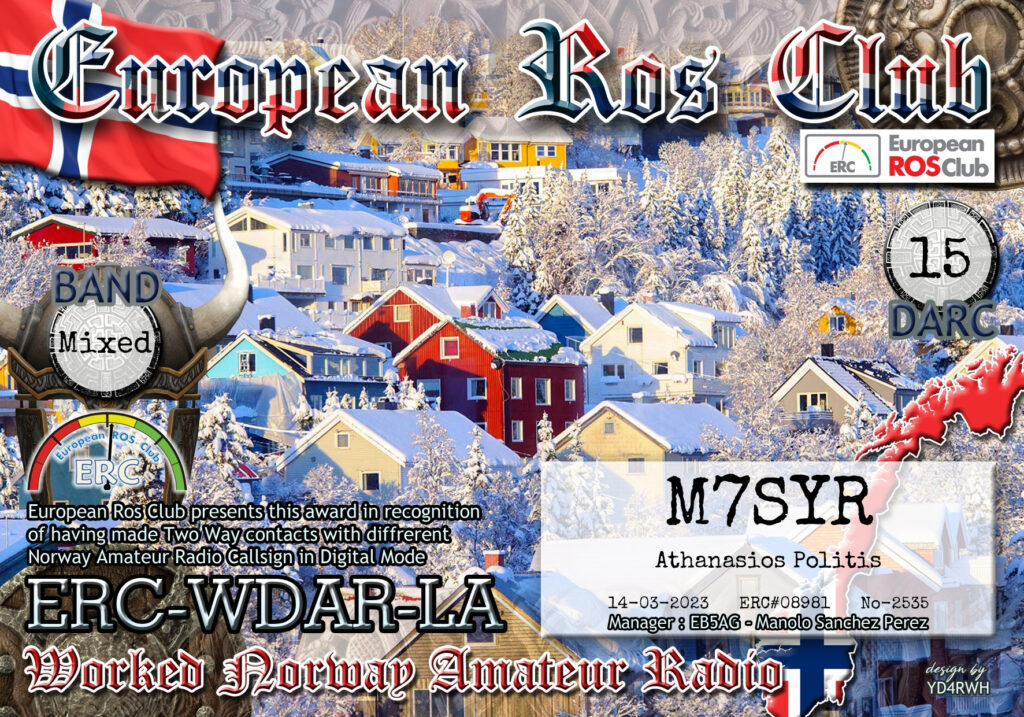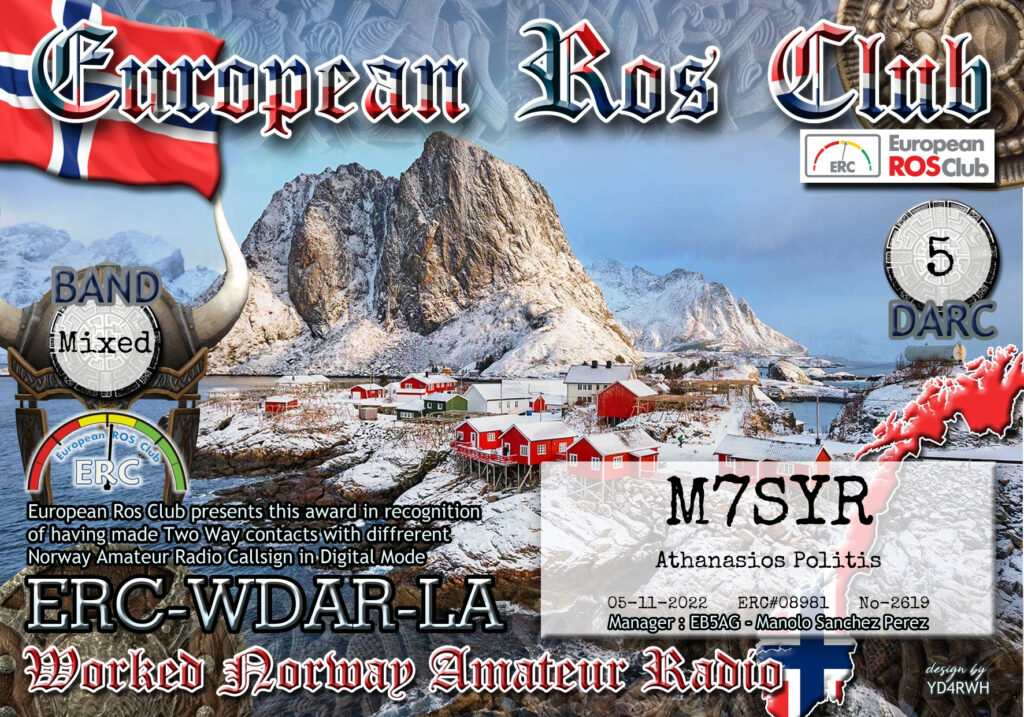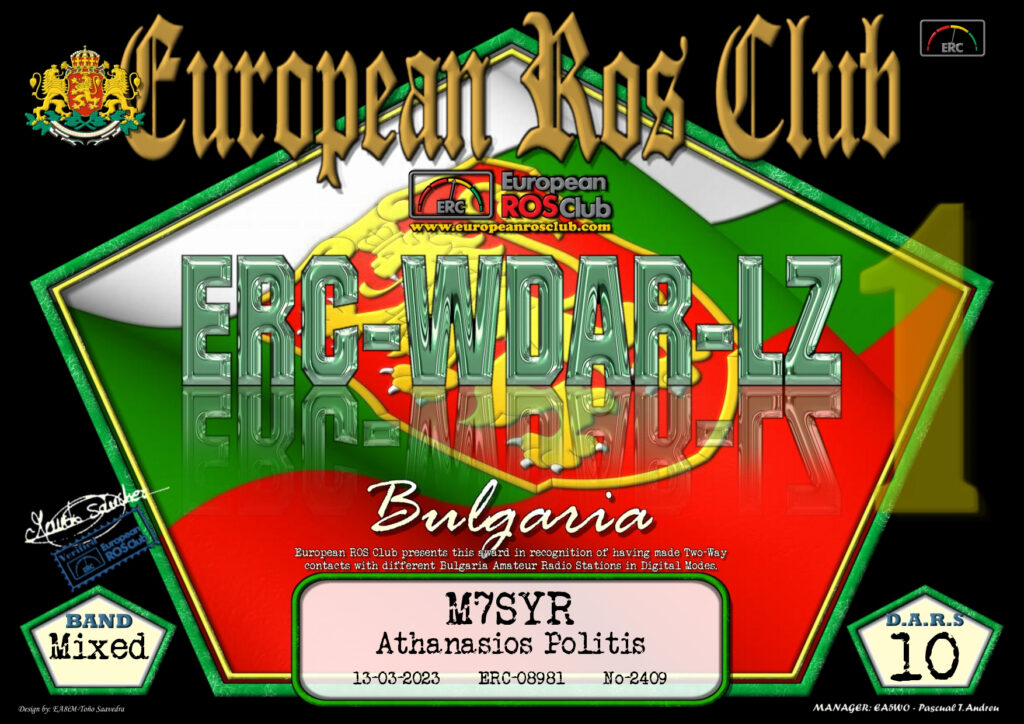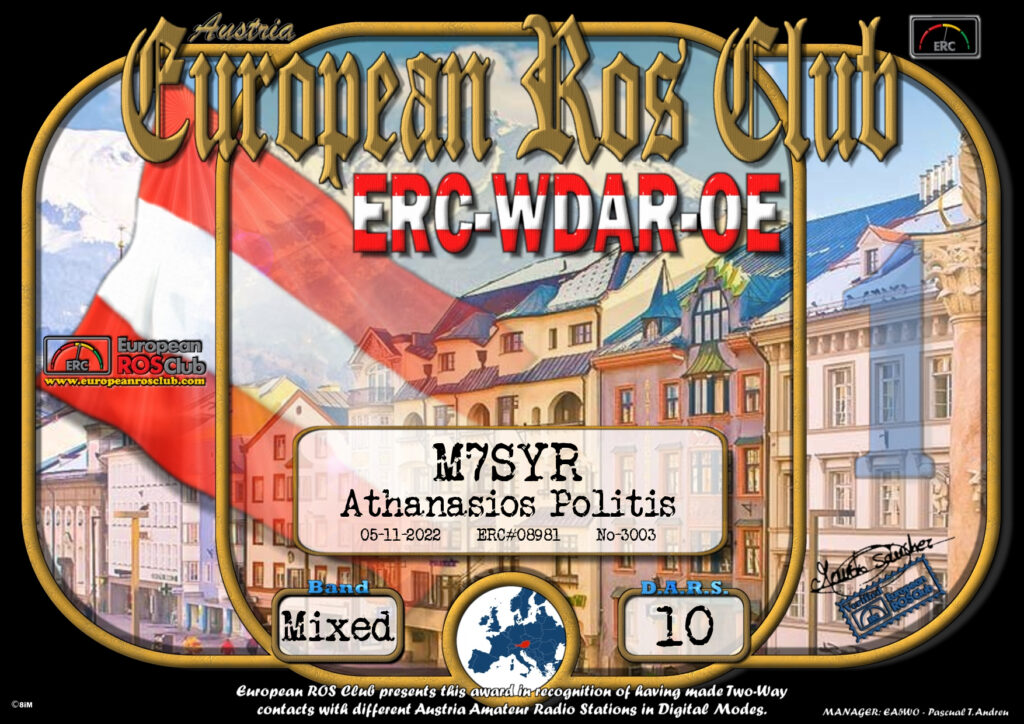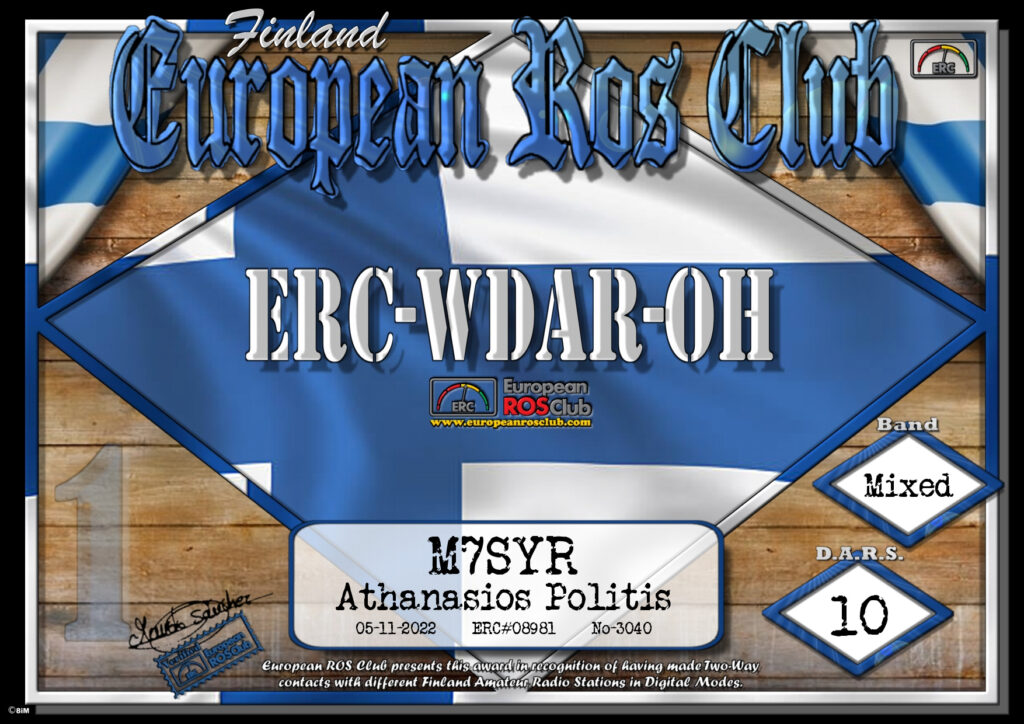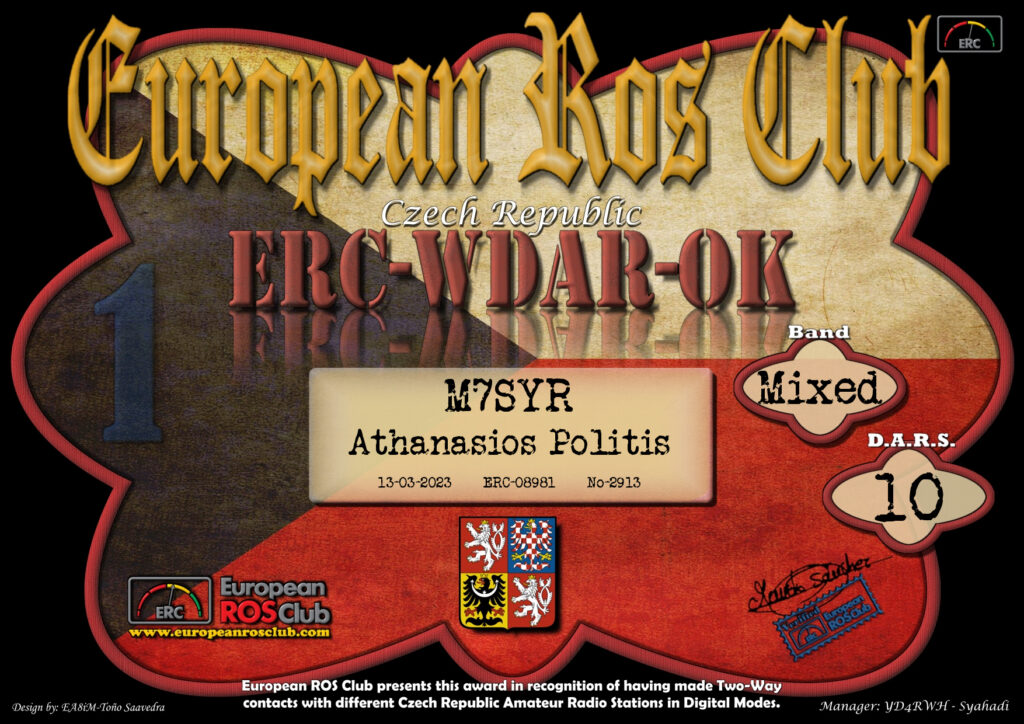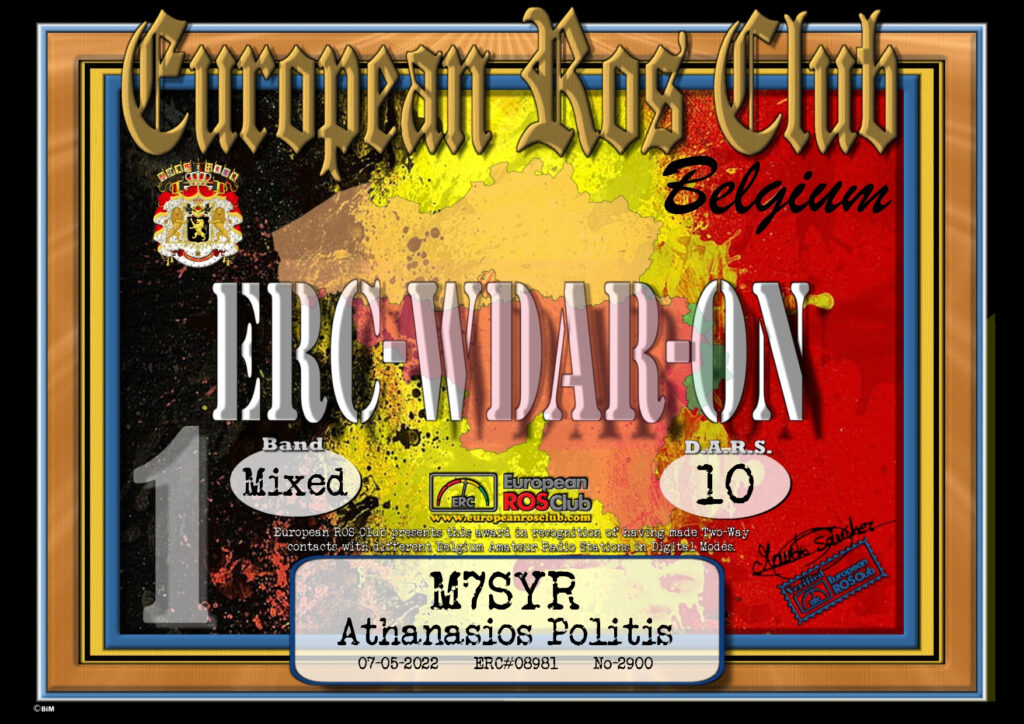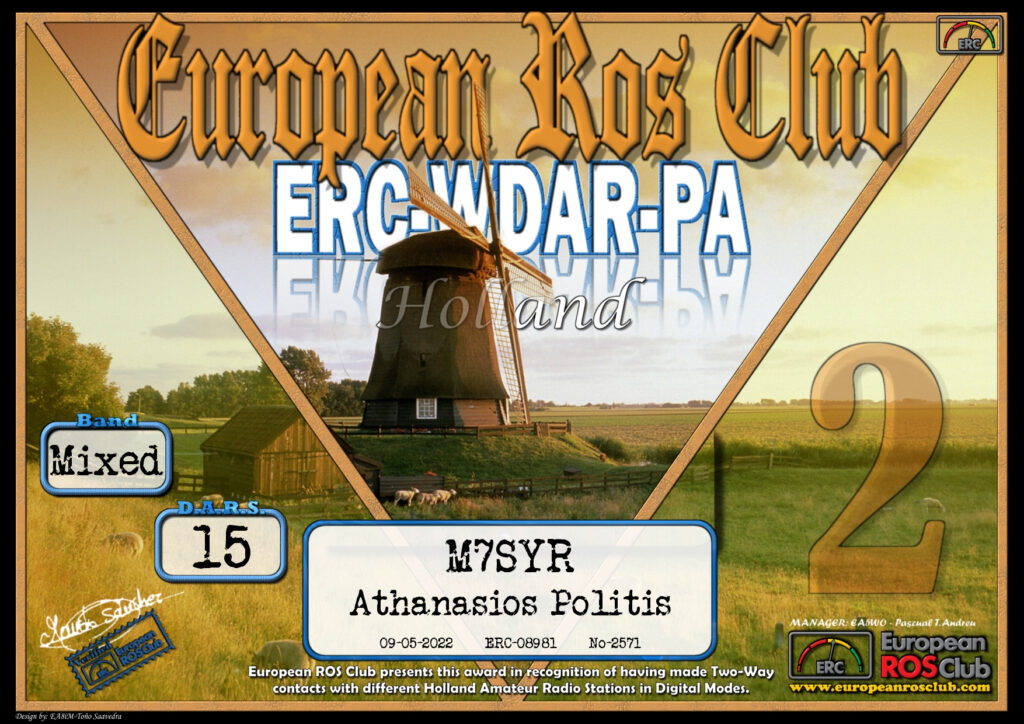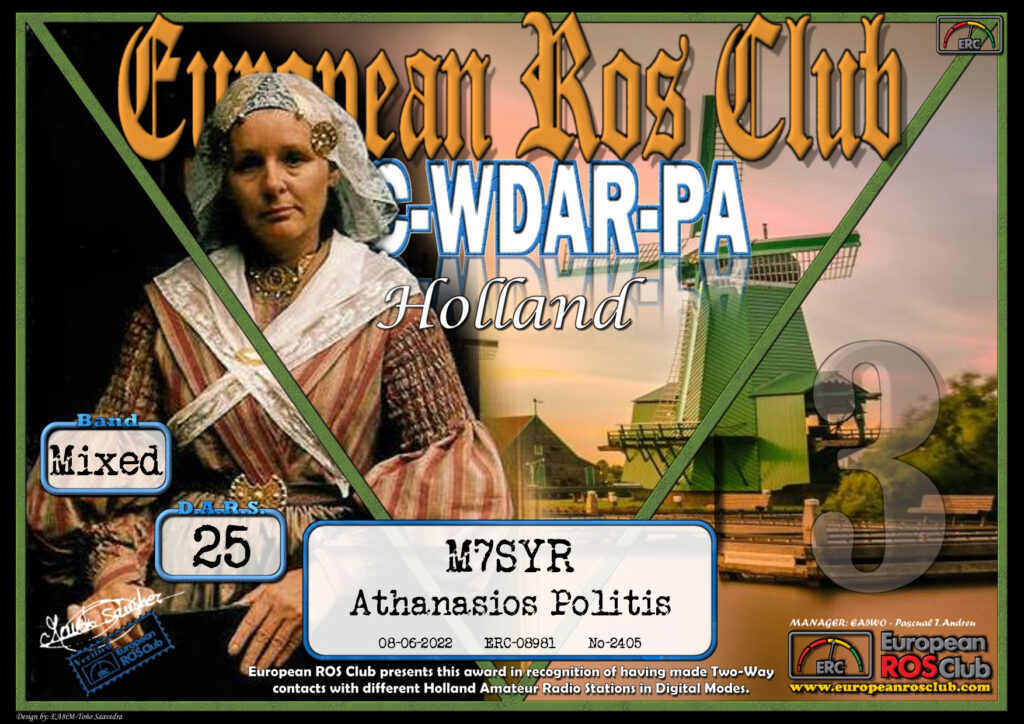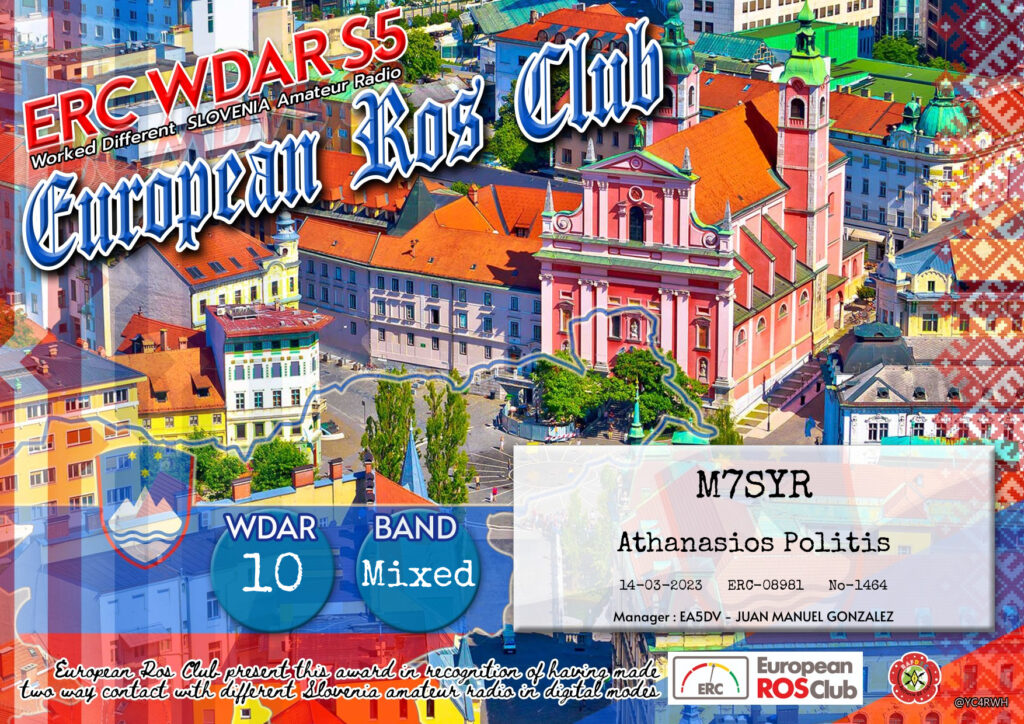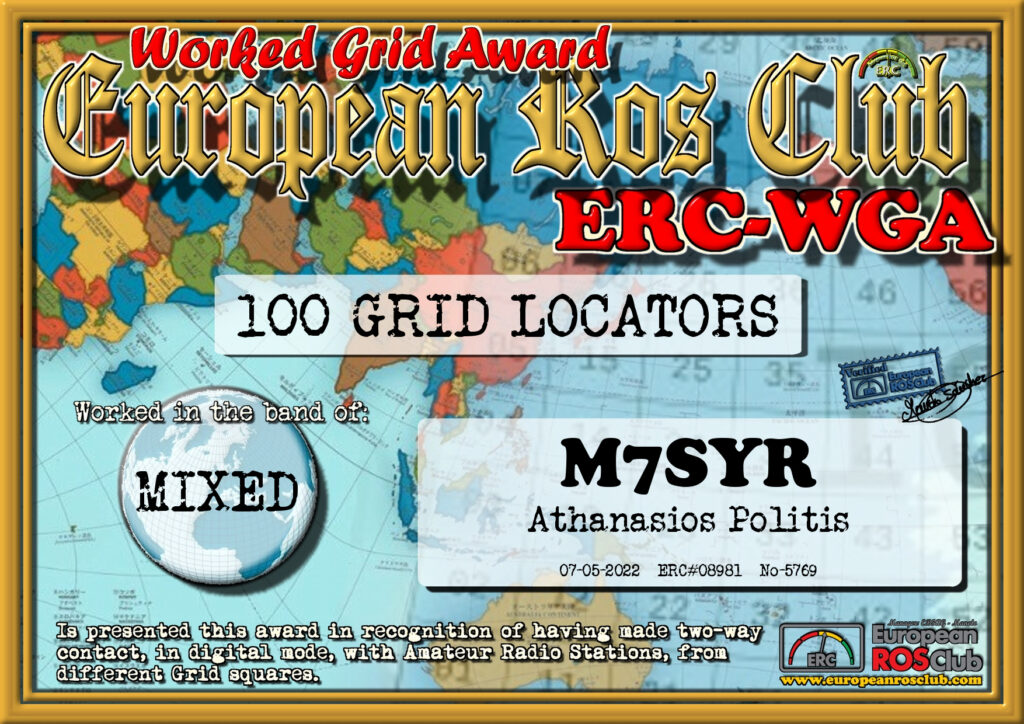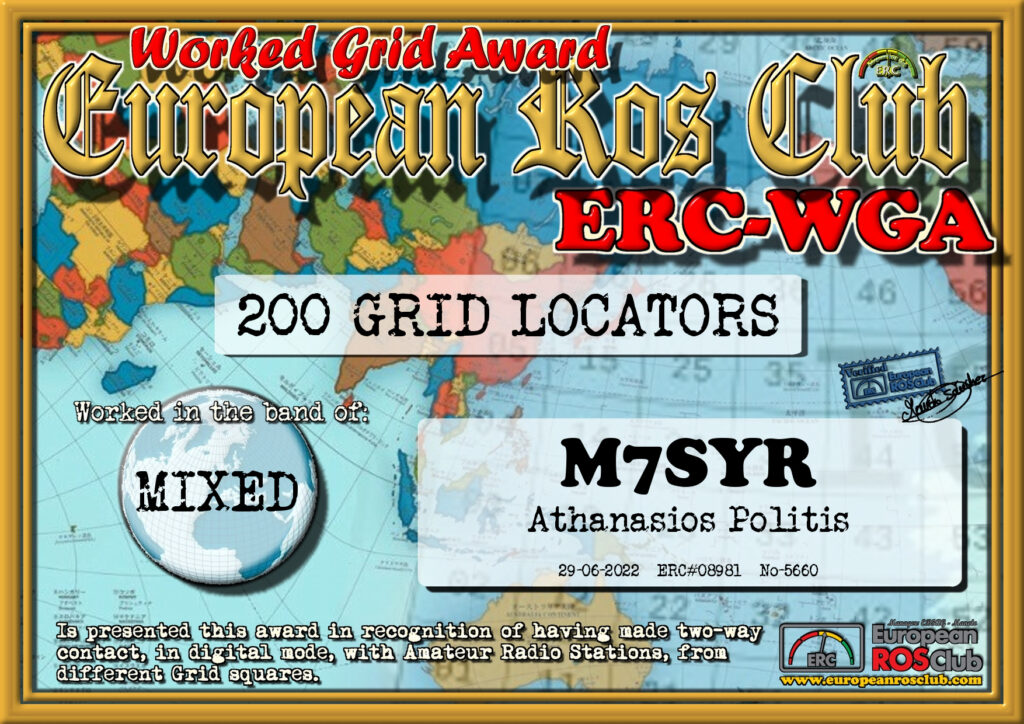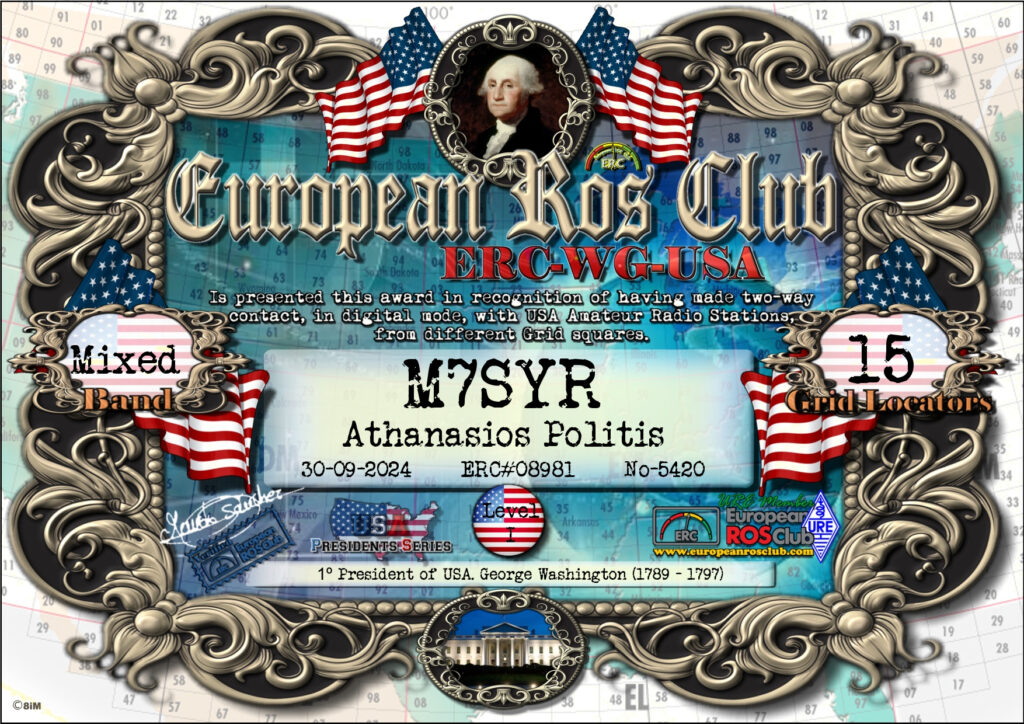In October 2021, I obtained my Amateur Foundation Radio Licence from Ofcom, receiving the call sign M7SYR. The suffix SYR is a tribute to my birthplace, Syros, a beautiful island in Greece — while M7 denotes a UK-issued Foundation level licence.
Since then, my journey in amateur radio has been both rewarding and inspiring. In the Digital Worldwide Contest, I achieved 1st place in England, 9th in Europe, and 11th worldwide, an accomplishment that reflects my dedication to the hobby and my focus on digital modes of communication.
I primarily operate with a Kenwood TS-590 transceiver paired with a 2E0ERO magnetic loop antenna mounted indoors on a tripod, usually working on the 20-meter band (14 MHz). Through this compact yet efficient setup, I’ve successfully established confirmed contacts with stations as far away as Argentina, Brazil, and Japan.

Clublog.org Livestream
For detailed logs, contest results, and technical notes, visit my QRZ.com page (M7SYR), where I share ongoing radio experiments, achievements, and equipment updates.
As part of my experimentation, I’ve also built several side projects, including an ADS-B radar station that tracks and feeds aircraft data to FlightRadar24. Using a Raspberry Pi, a USB SDR tuner, and an antenna, the system captures ADS-B (Automatic Dependent Surveillance–Broadcast) signals — real-time transmissions from aircraft sharing their position and flight data.
ADS-B Radar Station (T-EGKR92)
Dive into the fascinating world of aviation tracking with an ADS-B radar station. This project utilises a Raspberry Pi, an affordable USB SDR tuner, and a custom antenna to capture real-time data from aircraft using the Automatic Dependent Surveillance–Broadcast (ADS-B) system. By decoding this information, you can monitor aircraft positions and feed the data directly into FlightRadar24 and other flight tracking websites, enhancing the global network of flight tracking.
If you would like to find out how to build your own ADS-B Radar Station, please check my blog post on how to build one under the Amateur Radio category.

Another experiment was setting up a NOAA/METEOR satellite system based on the R2Cloud project. This system, again using a Raspberry Pi, a USB SDR tuner, and a home-brew antenna, allows me to track, record, and decode weather satellite signals (among many others), resulting in satellite weather photos as the satellites pass overhead.
Weather Satellite Station
Embark on a captivating journey into the realm of weather observation with my NOAA/METEOR satellite system, inspired by the SatNOGS project. Utilising a Raspberry Pi, a USB SDR tuner, and a custom-built antenna, this experiment enables me to track, record, and decode signals from various weather satellites. As these satellites pass overhead, I capture stunning satellite weather photos that provide valuable insights into our planet’s atmospheric conditions, the intricacies of satellite communication and the beauty of Earth from above!
Signal Reception
NOAA 18
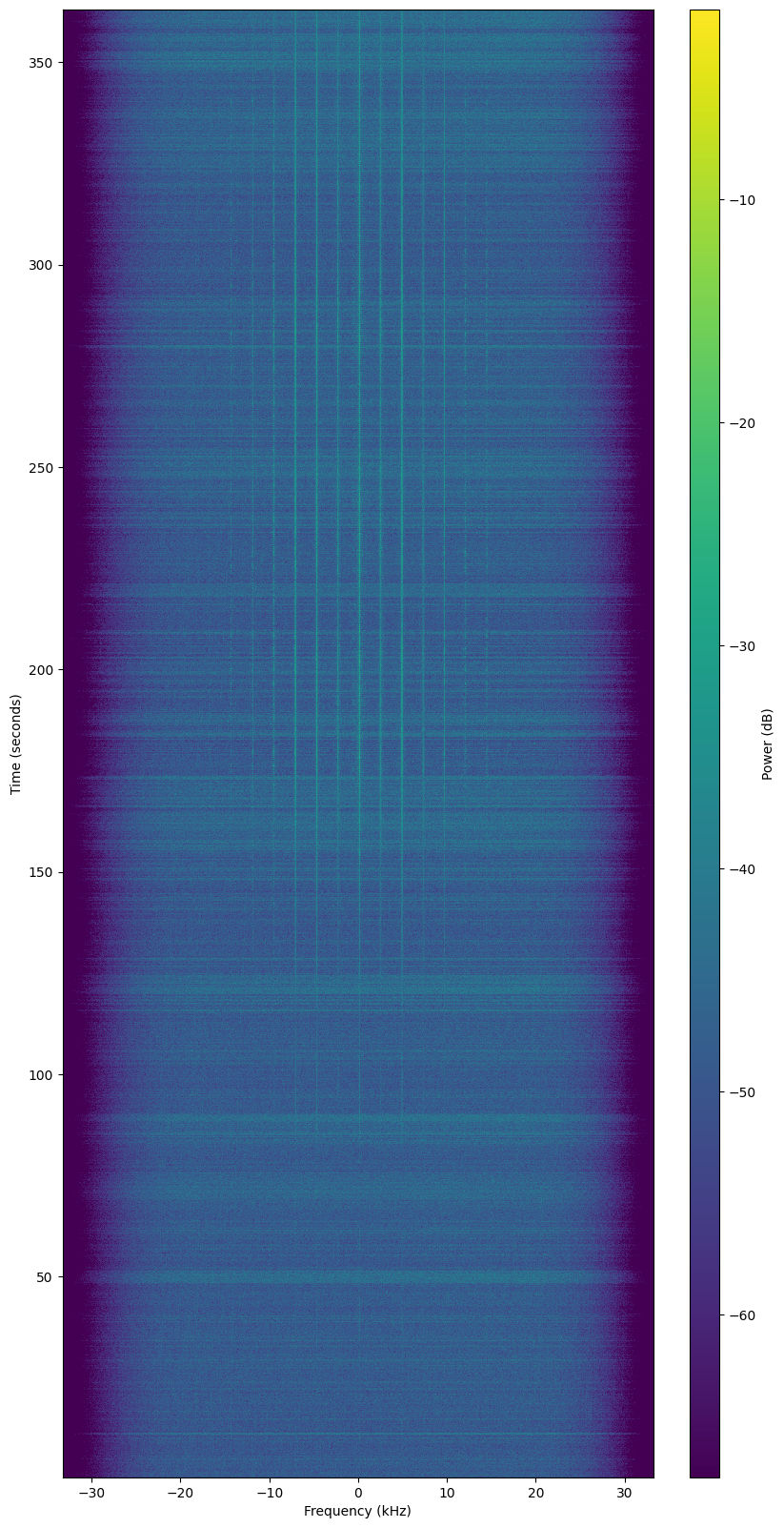
NOAA 19
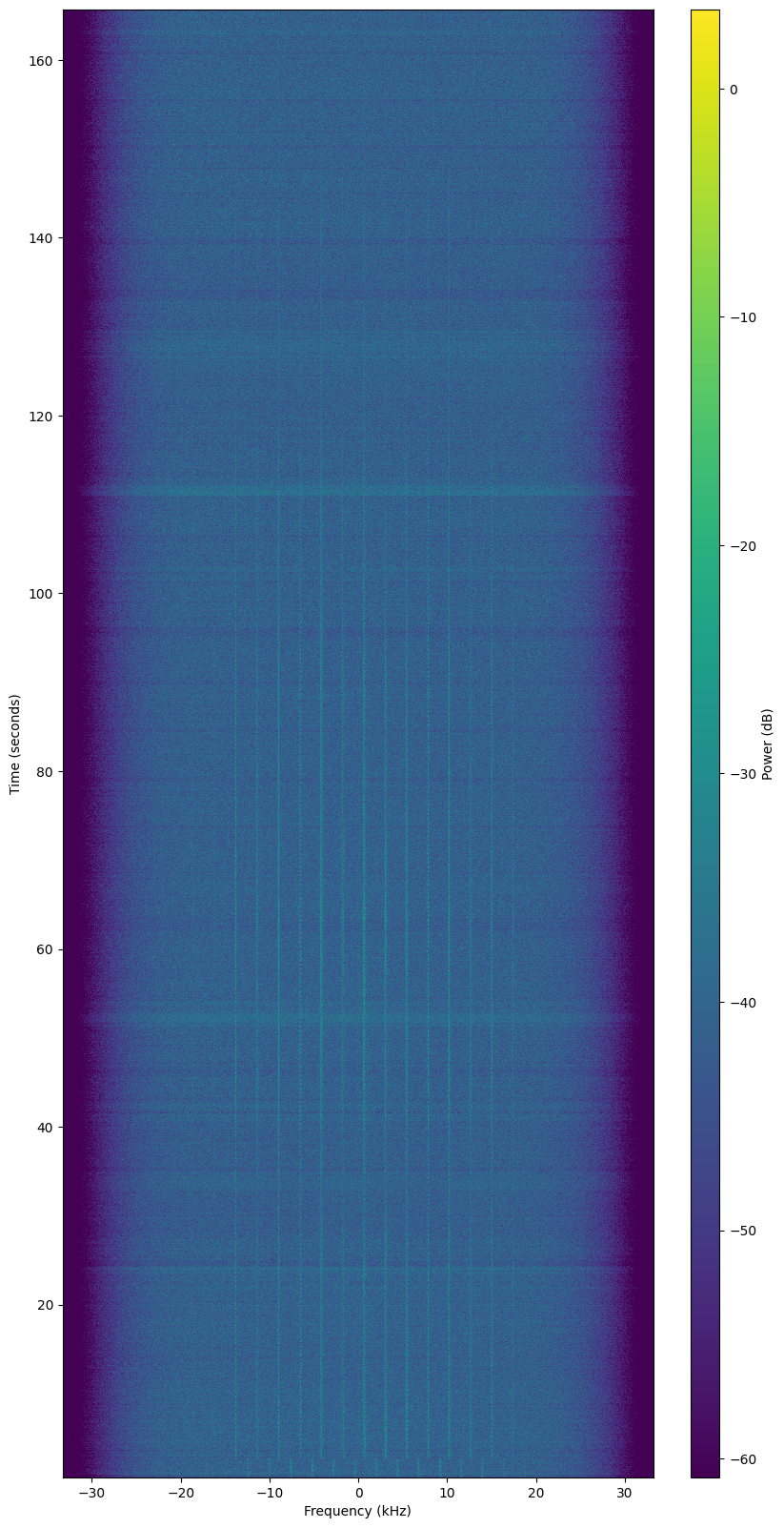
Weather Photos


What I truly enjoy about this hobby is the ability to experiment and create home-brew devices, such as antennas, using everyday household items—a perfect mix of science, creativity, and technology.
You can find detailed information for both projects on my blog under the Amateur Radio category.
Awards
World Wide Digital DX Contest
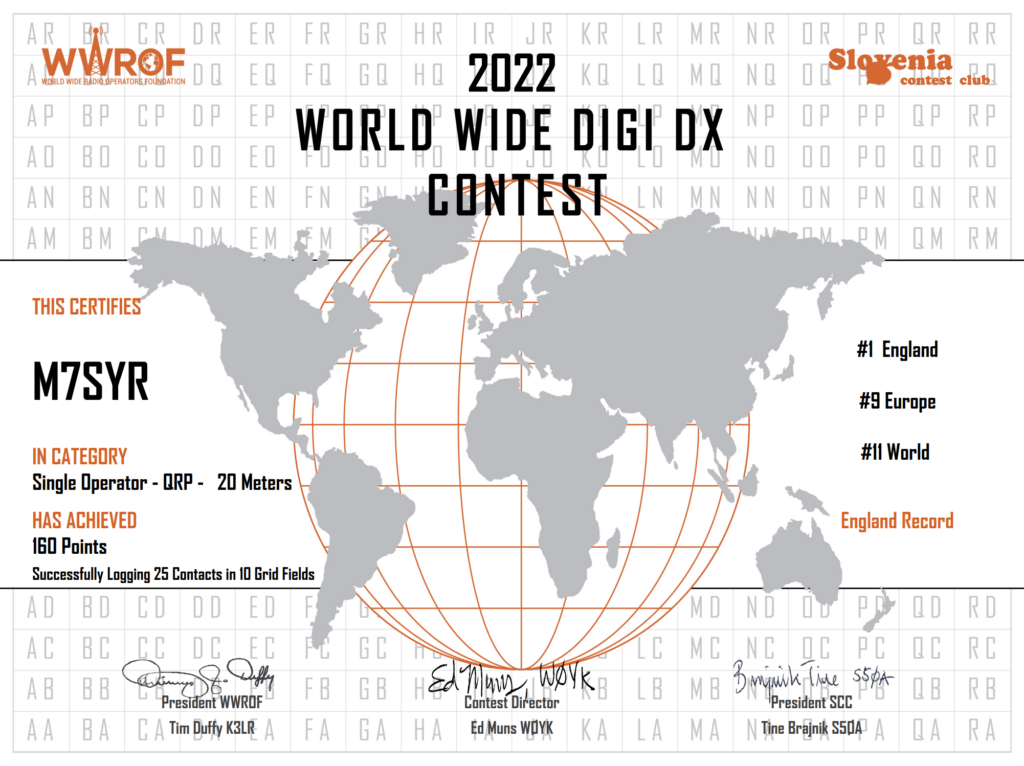
QRZ.com Awards
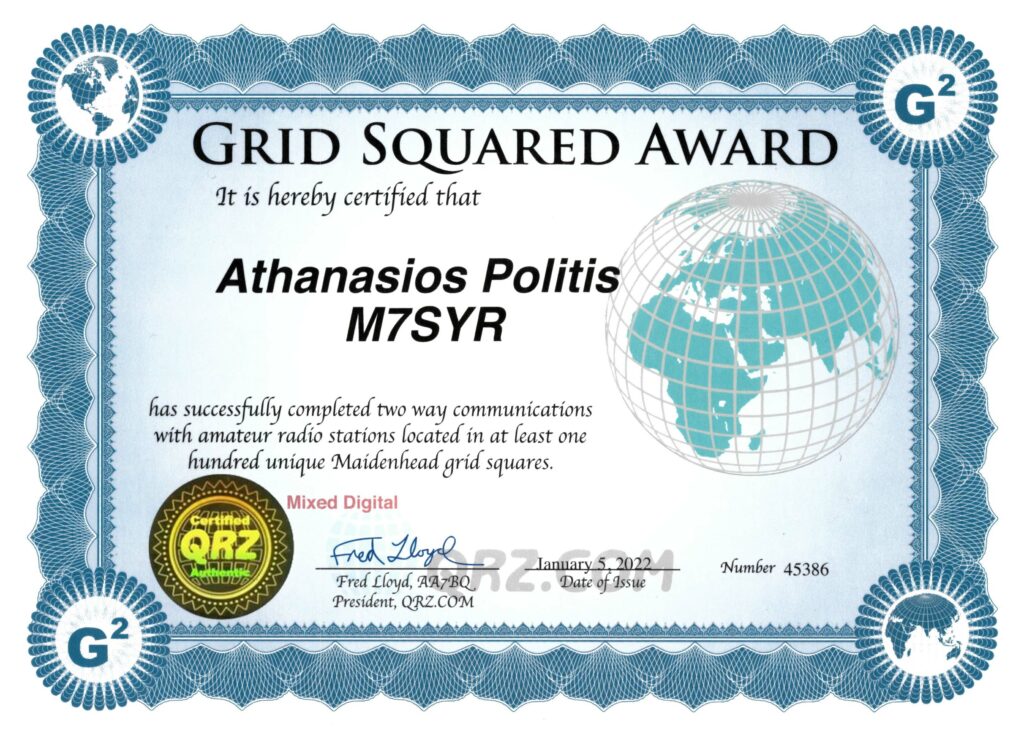
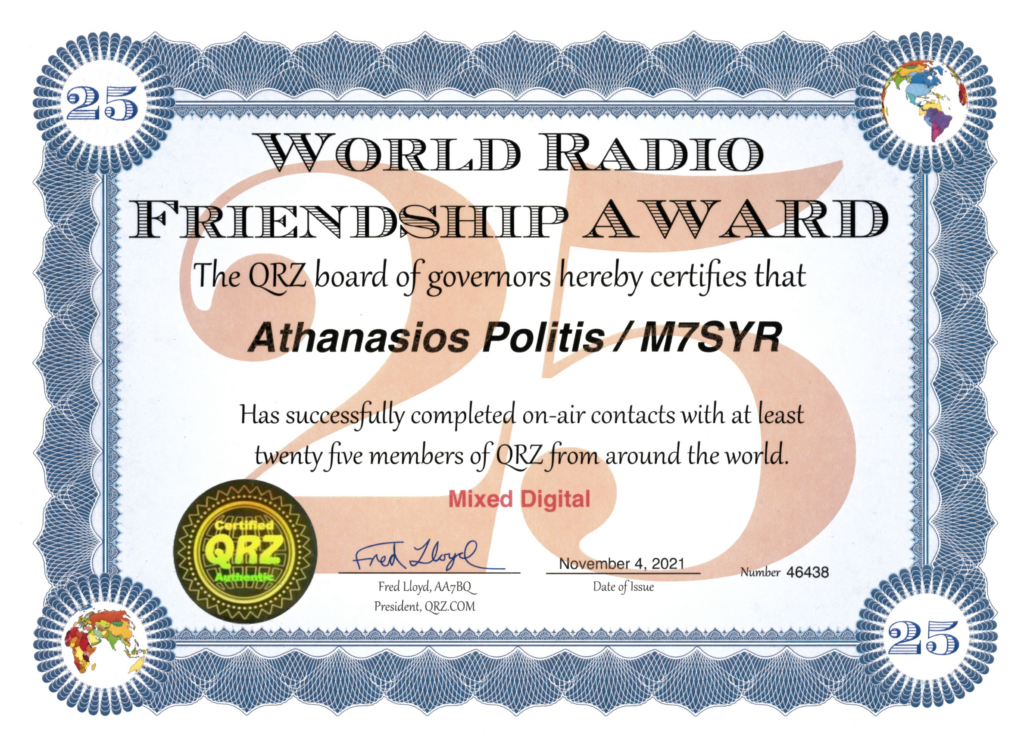
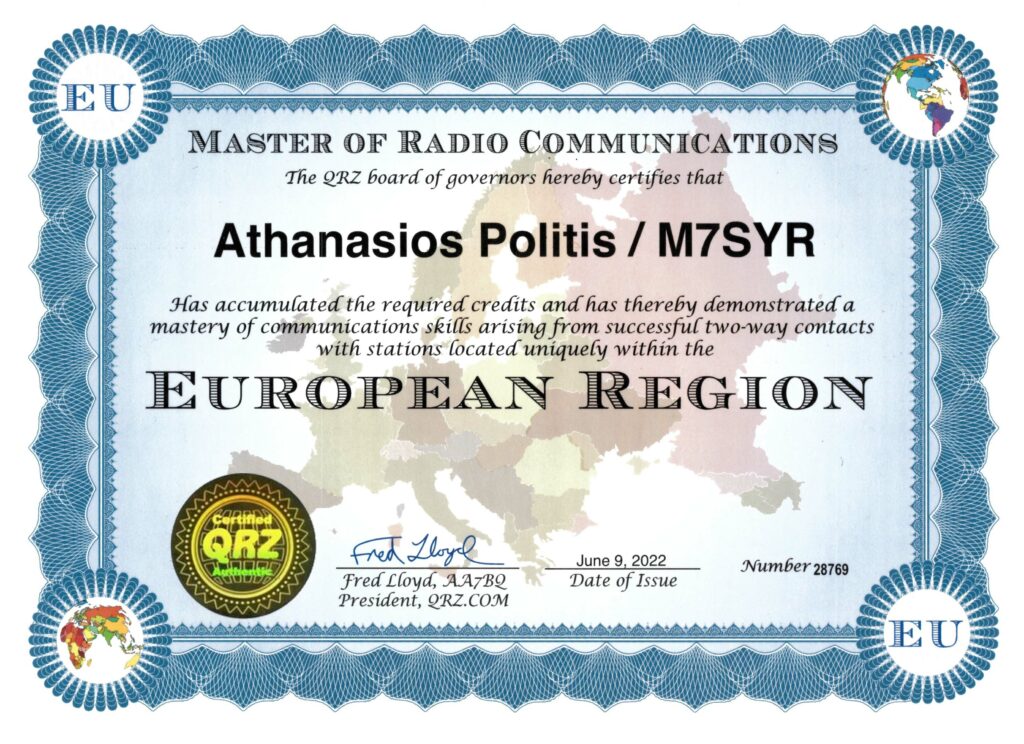
FT8 Digital Mode Club

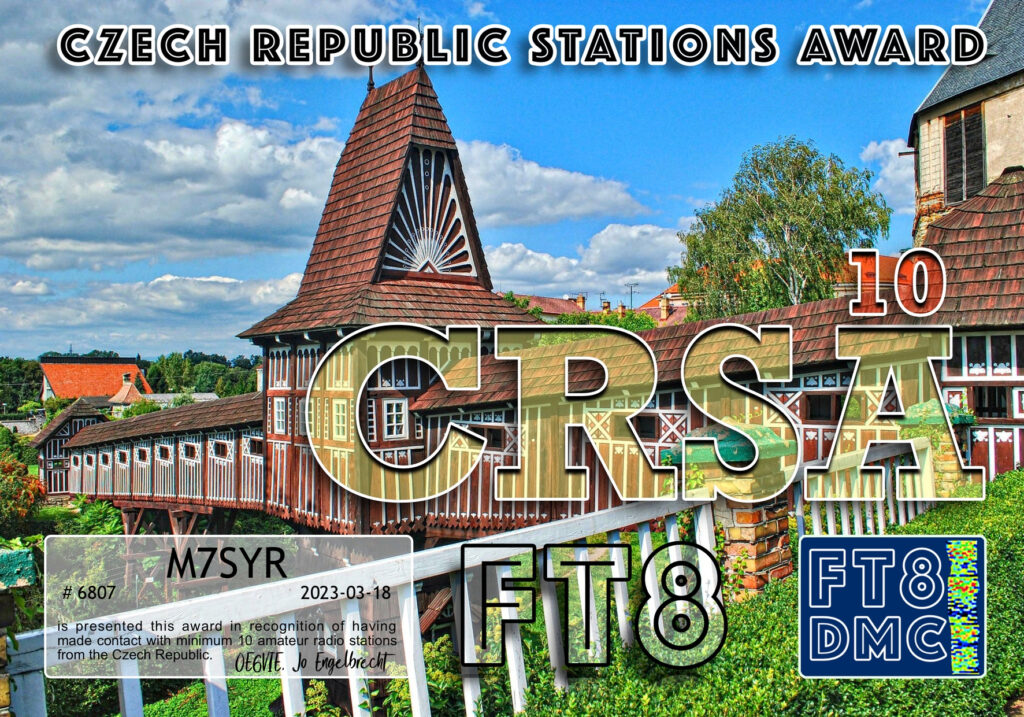

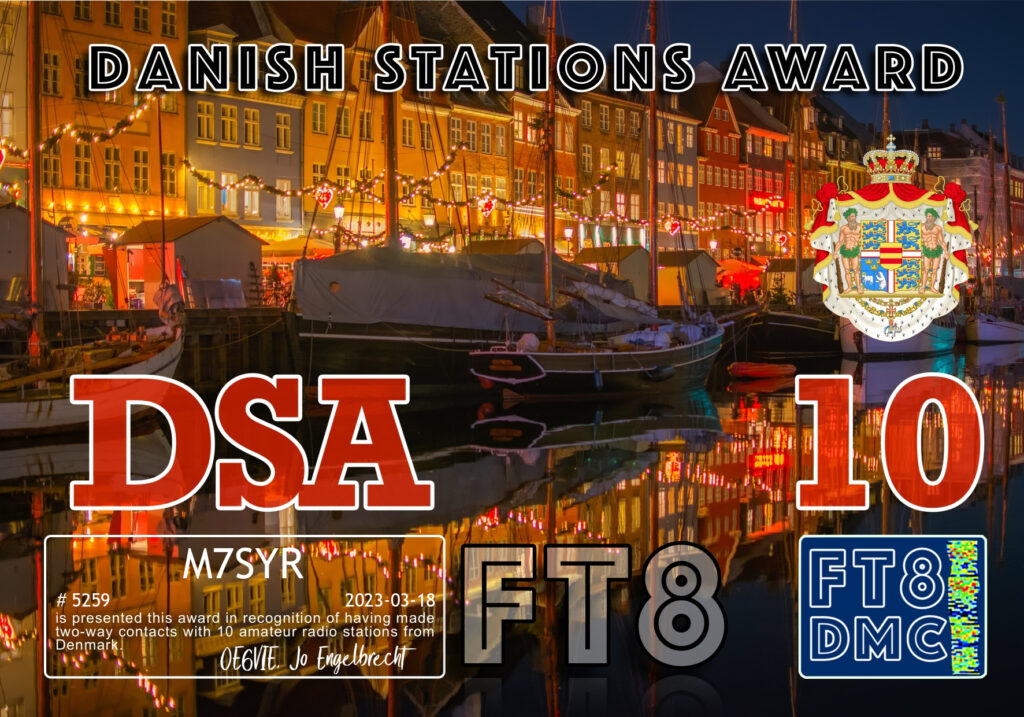









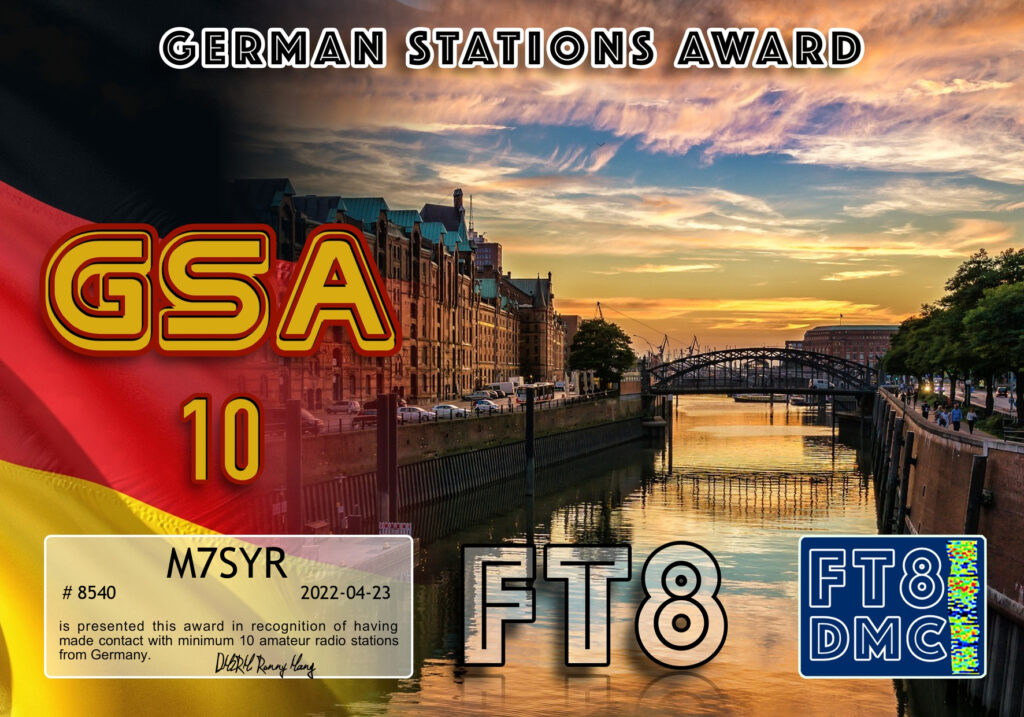
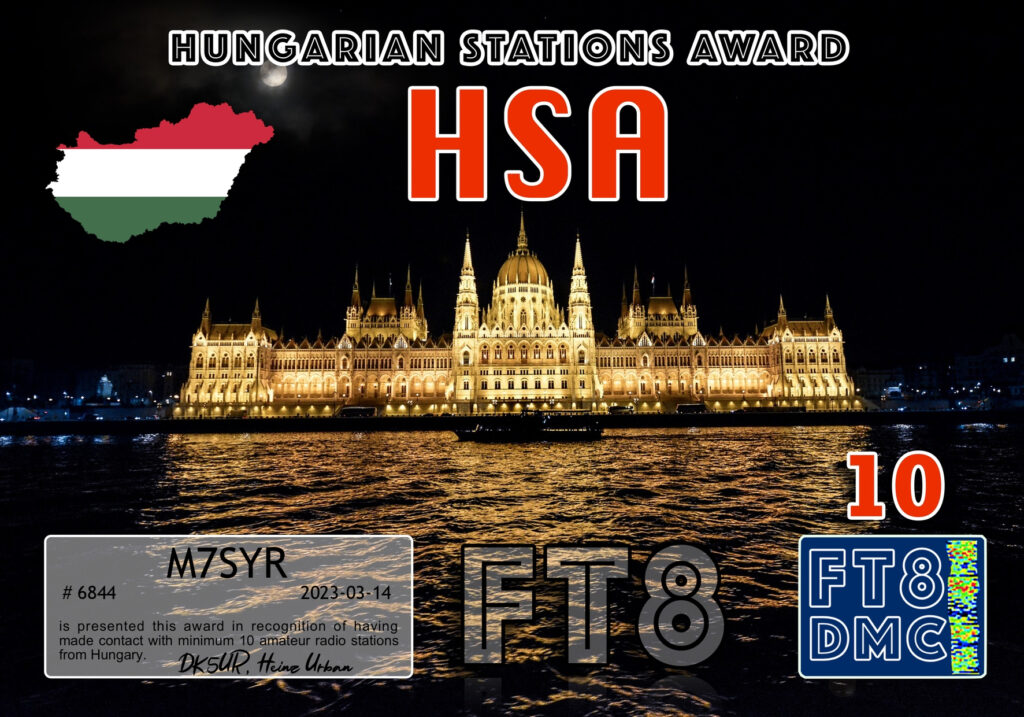


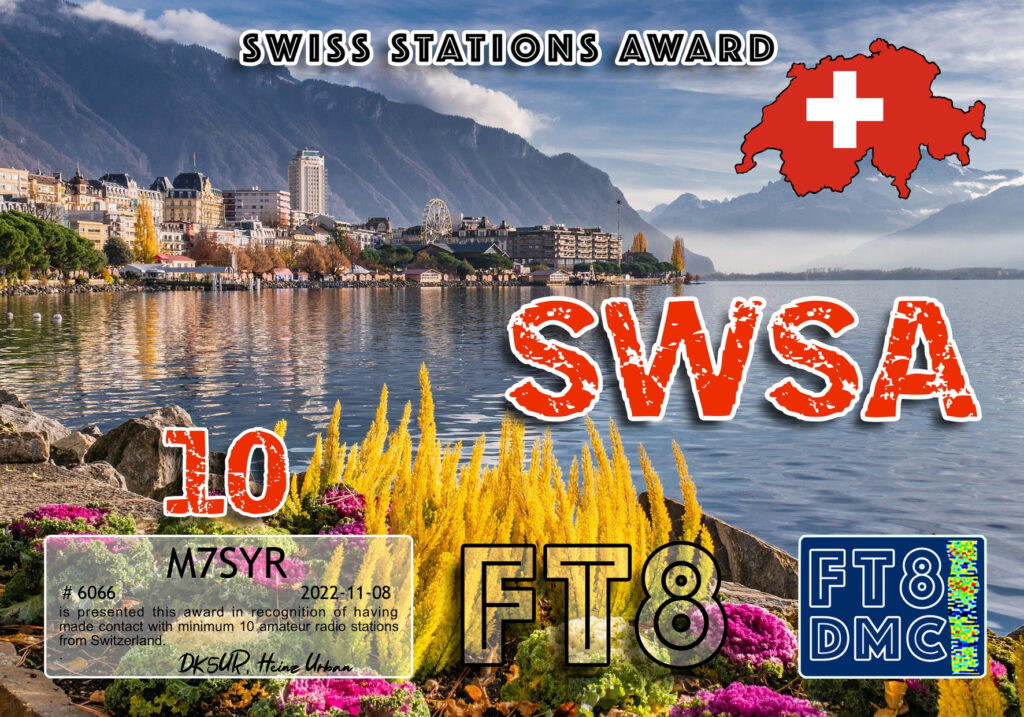
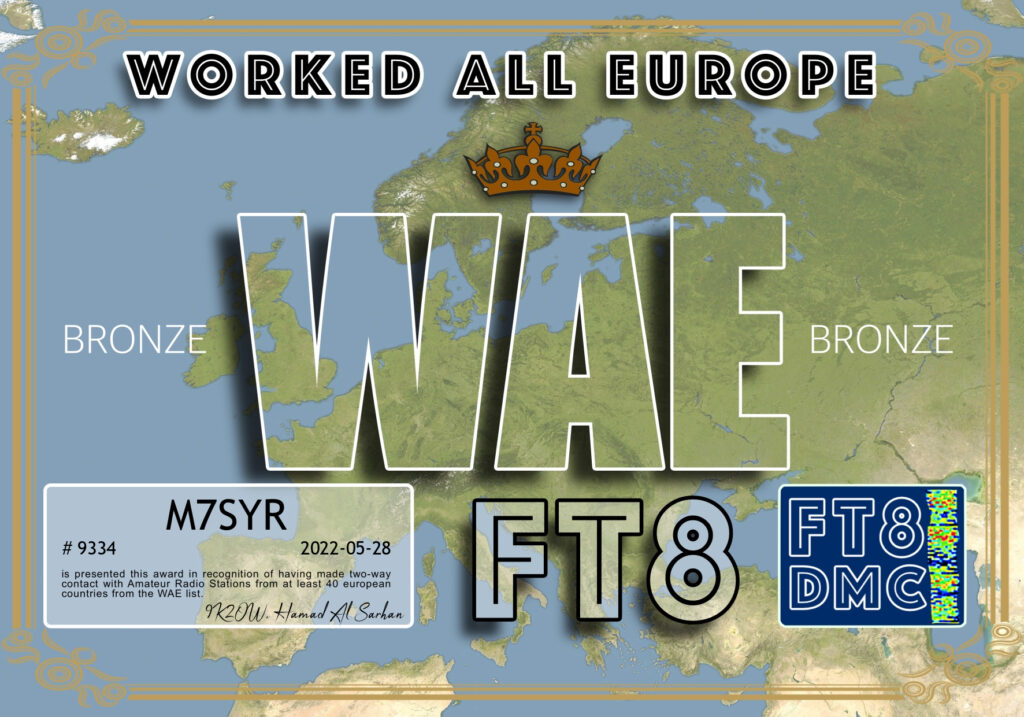
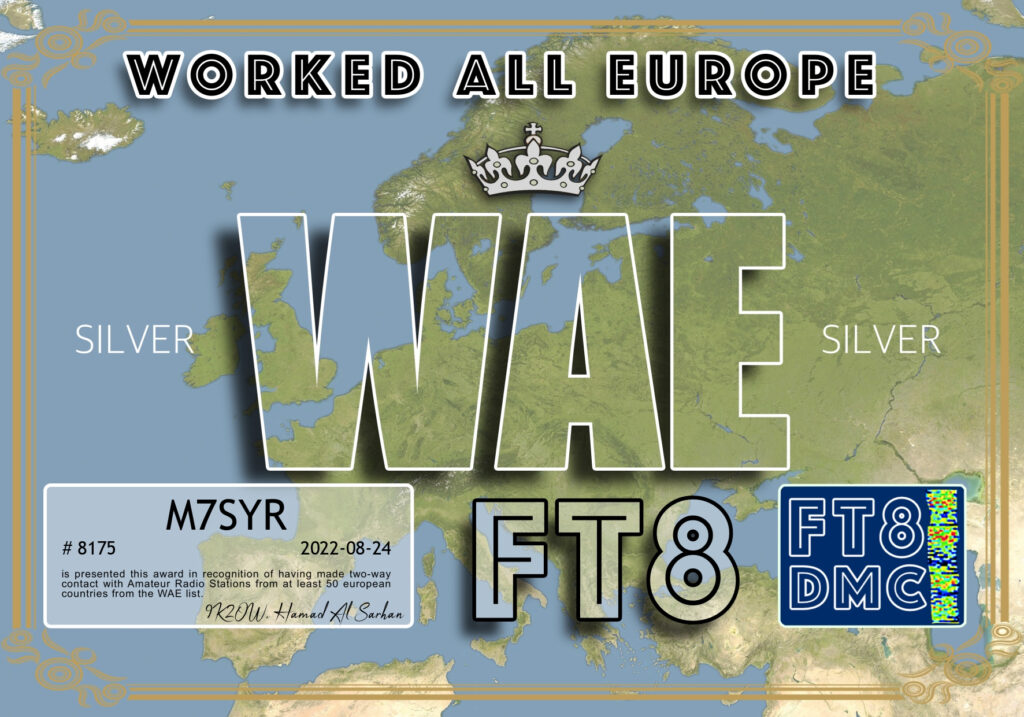
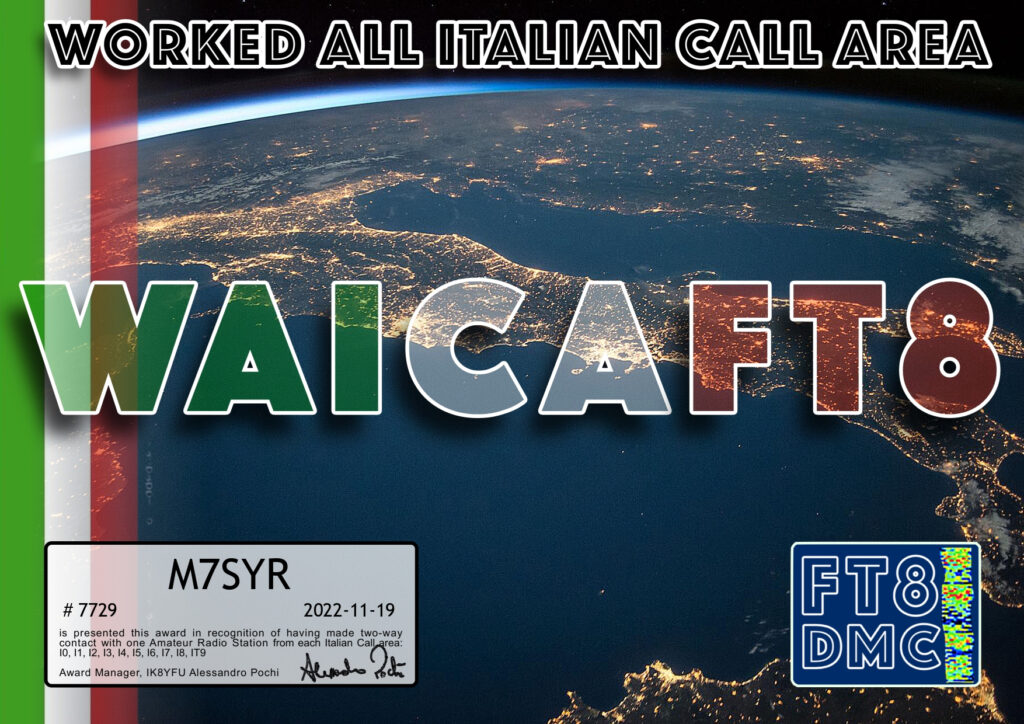



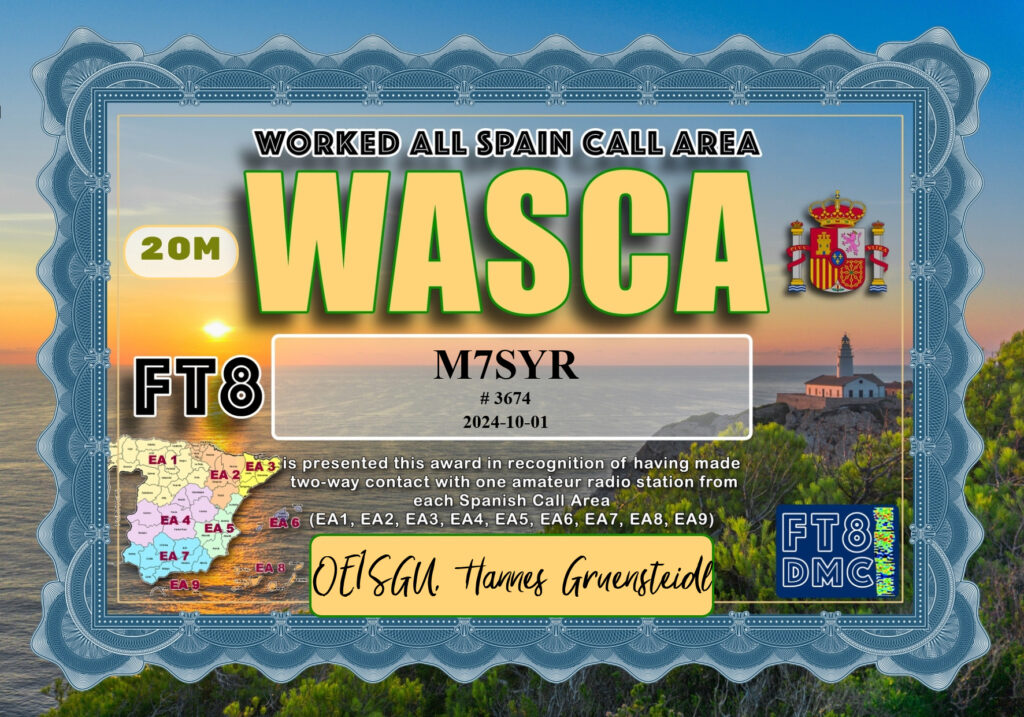









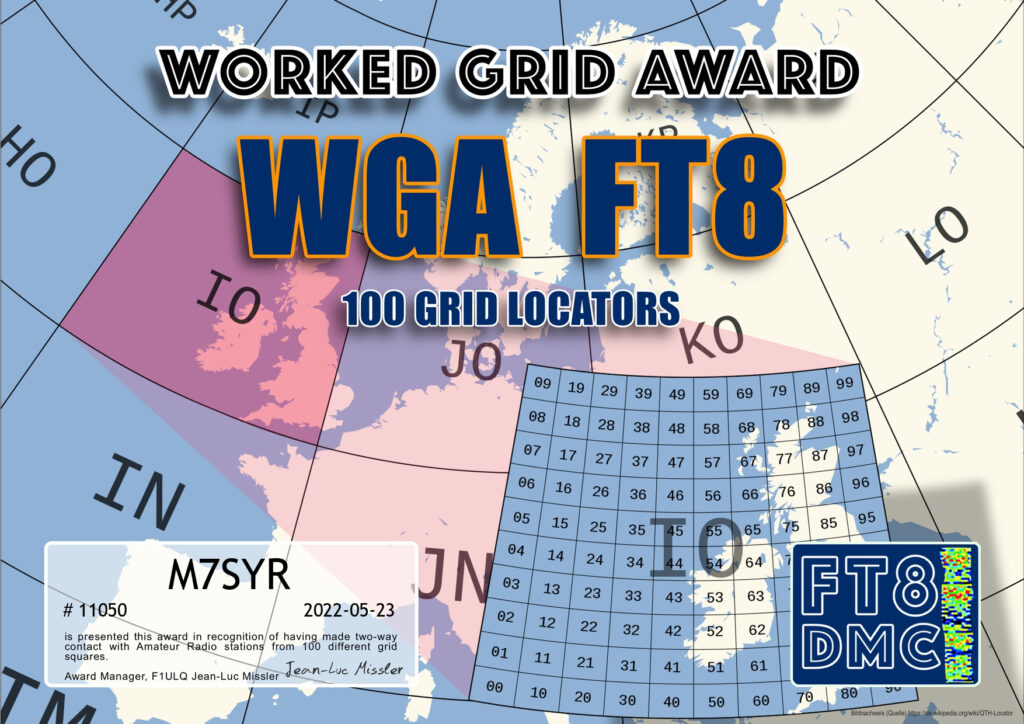
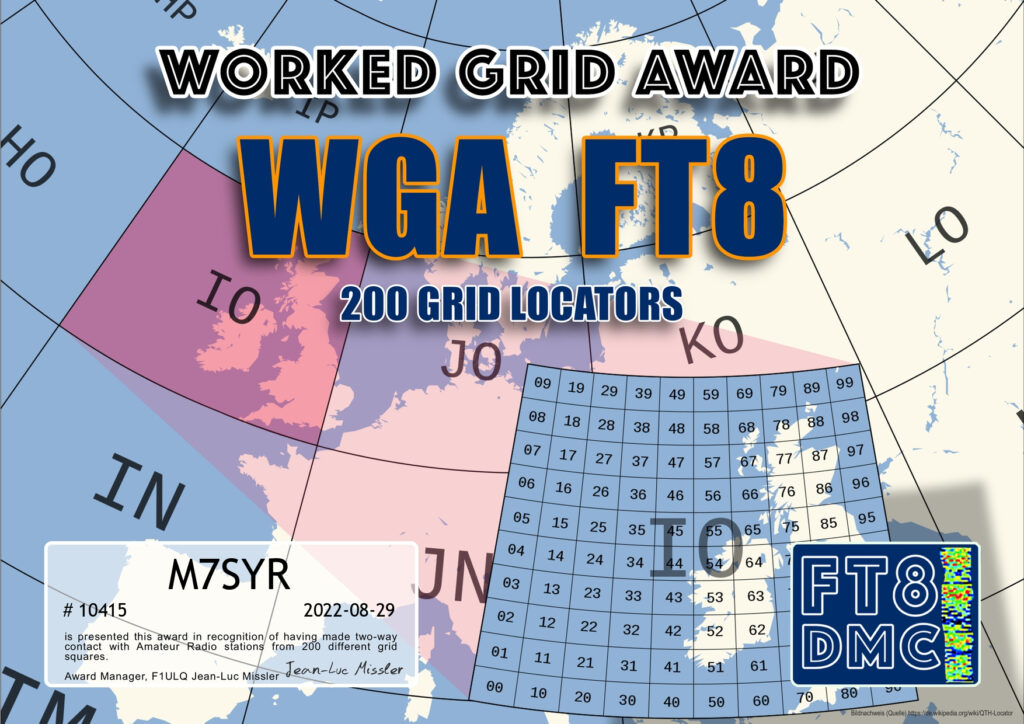
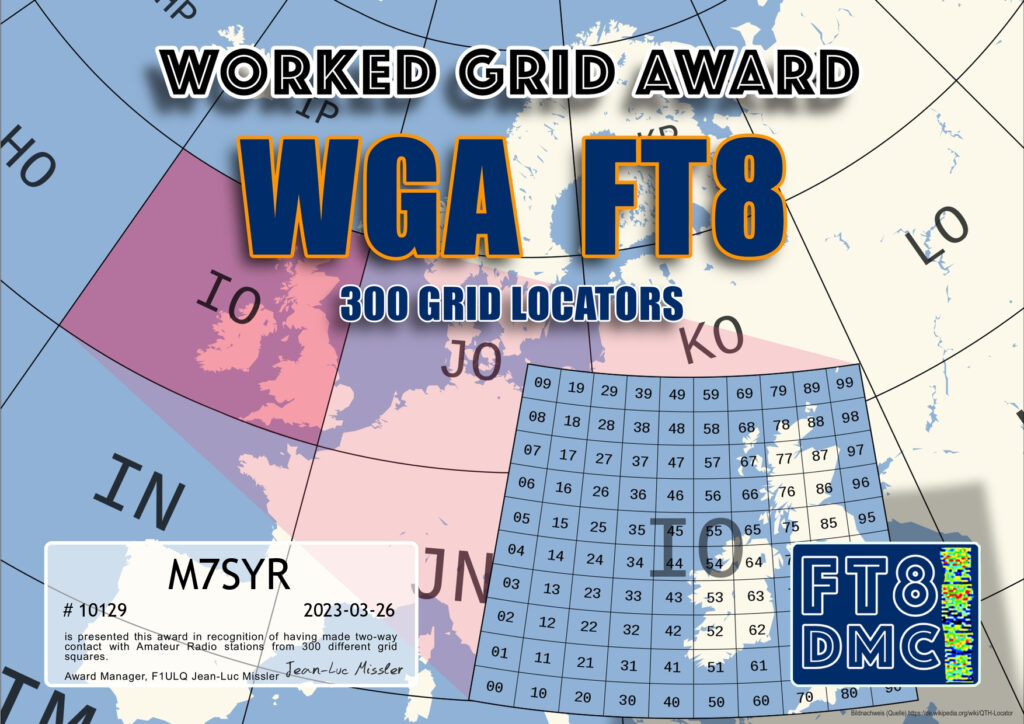
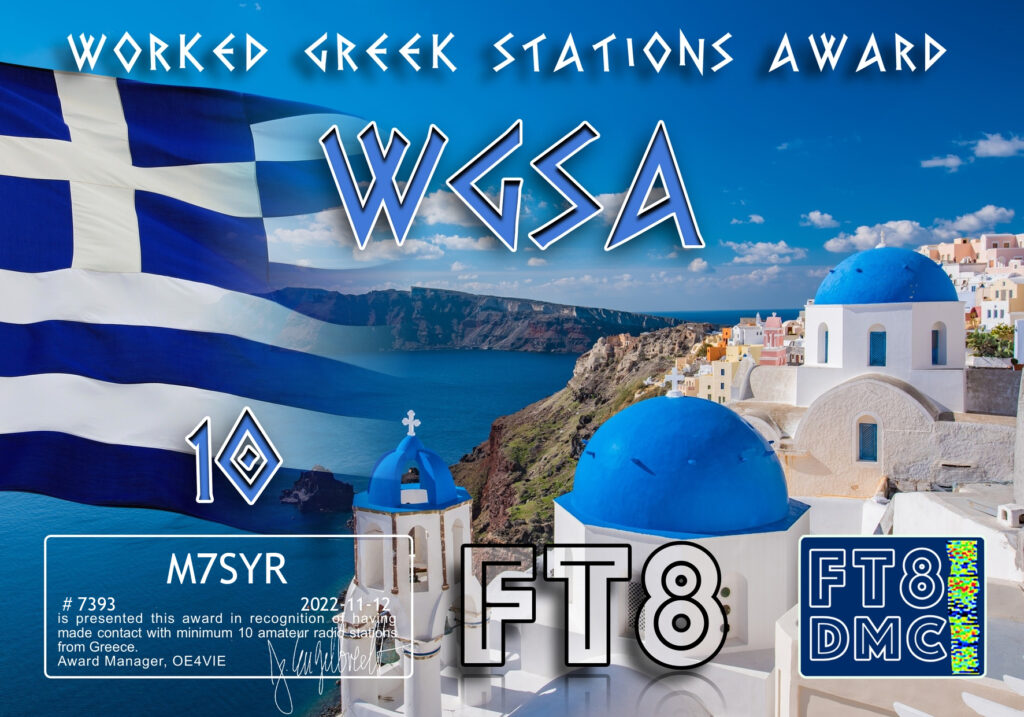
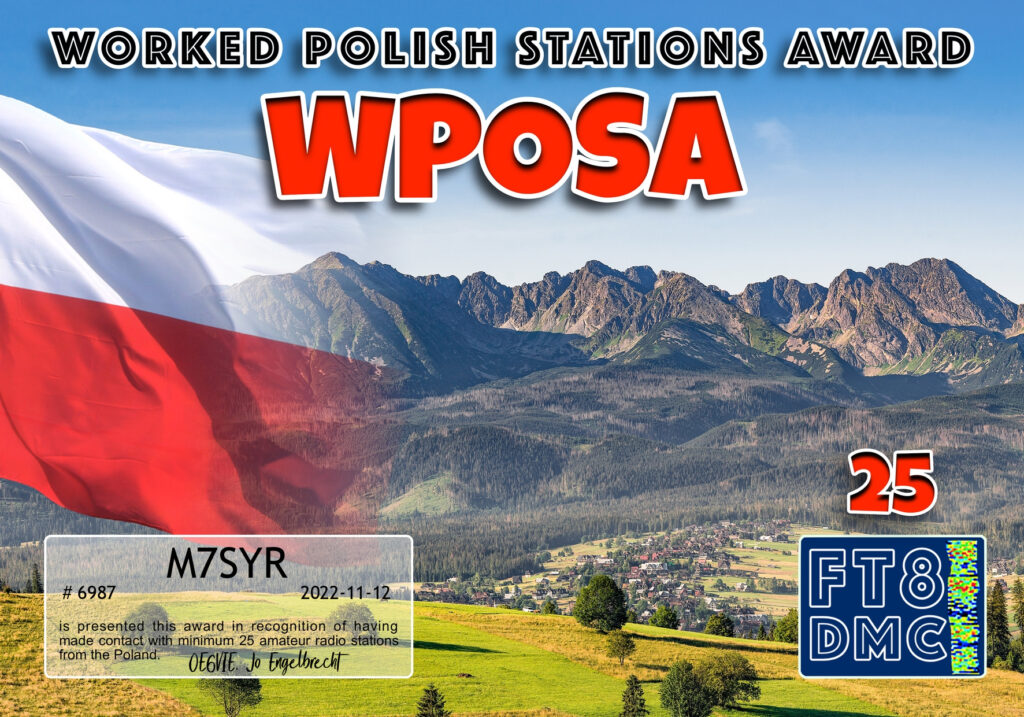


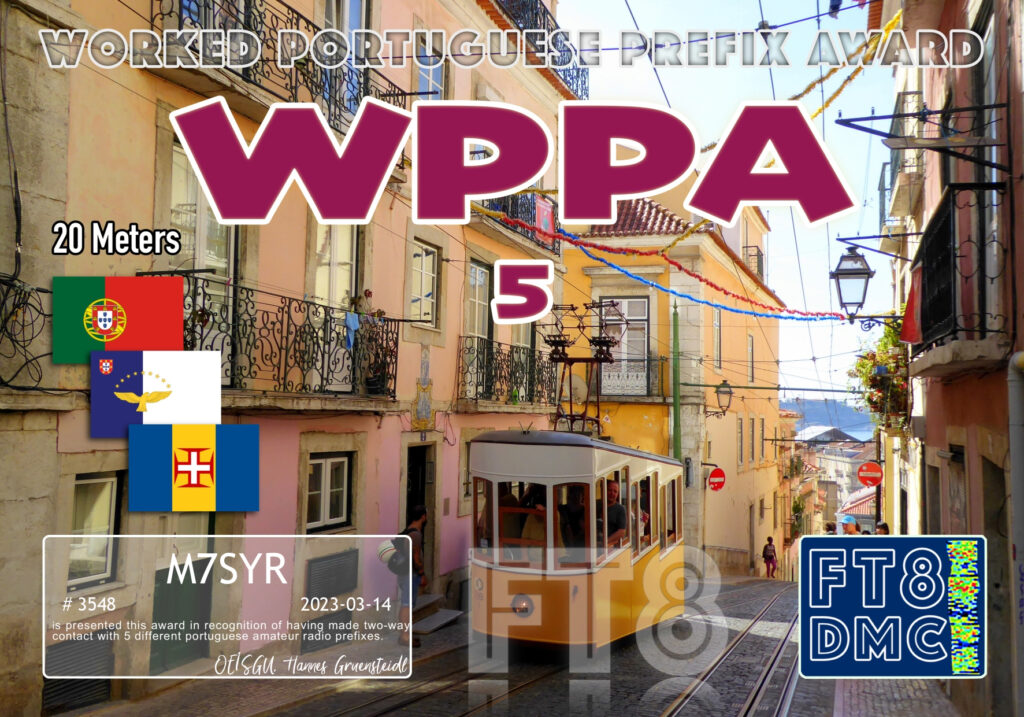
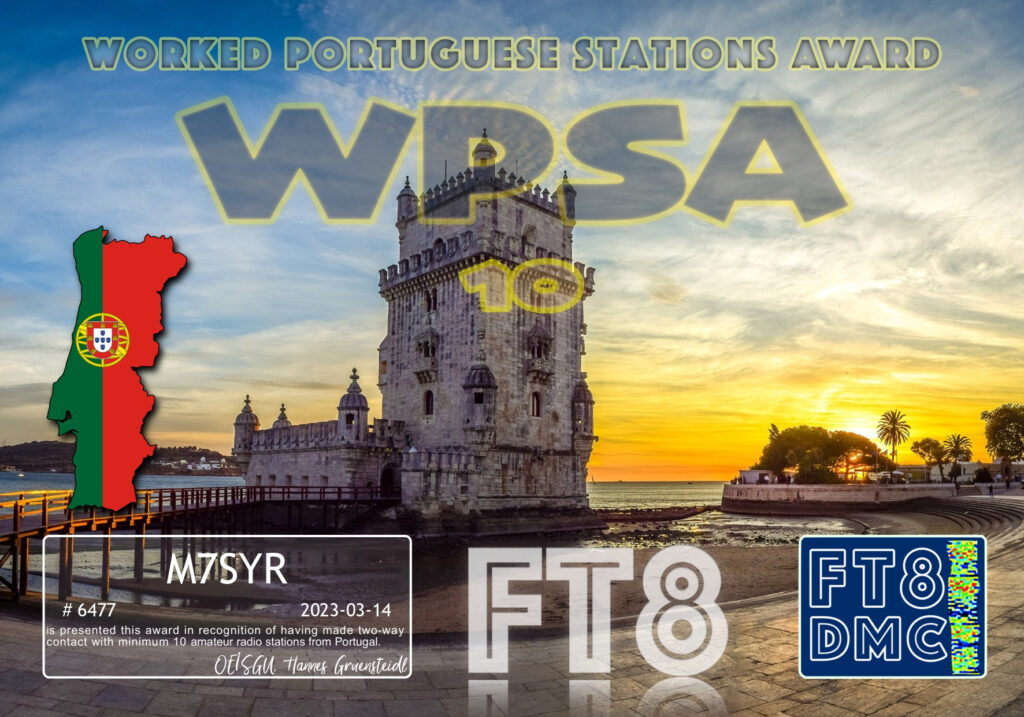
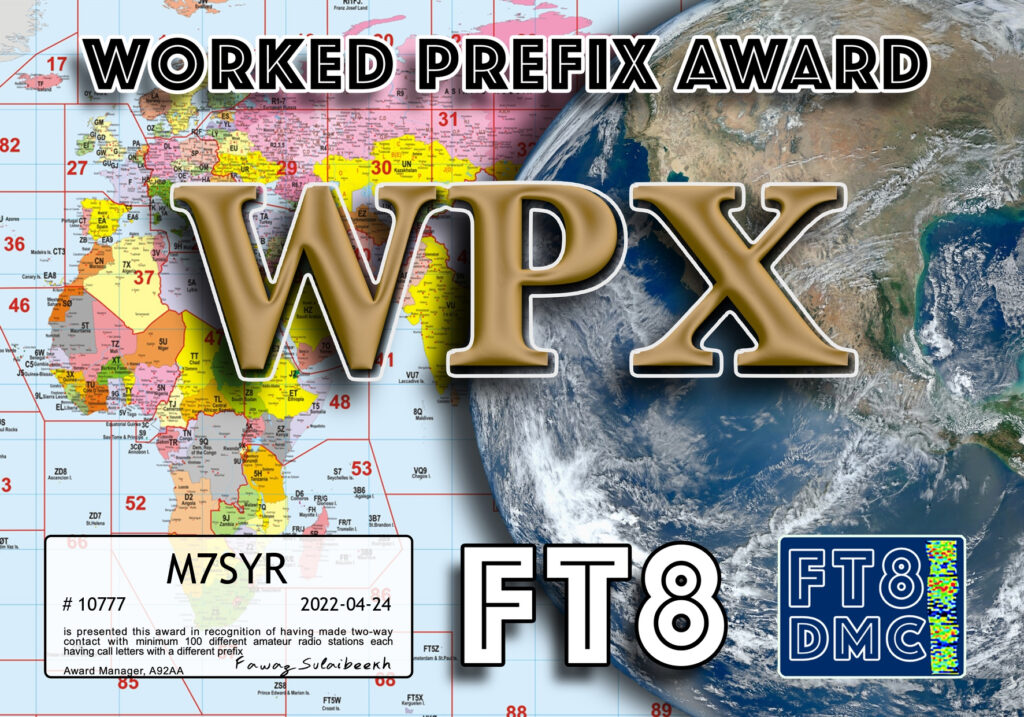
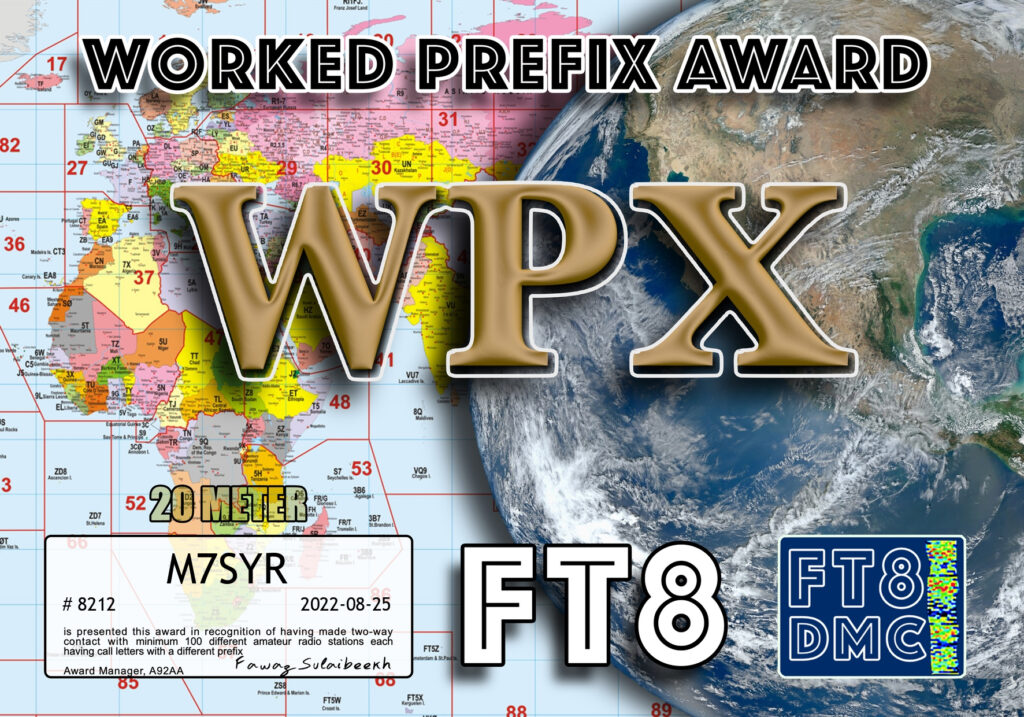


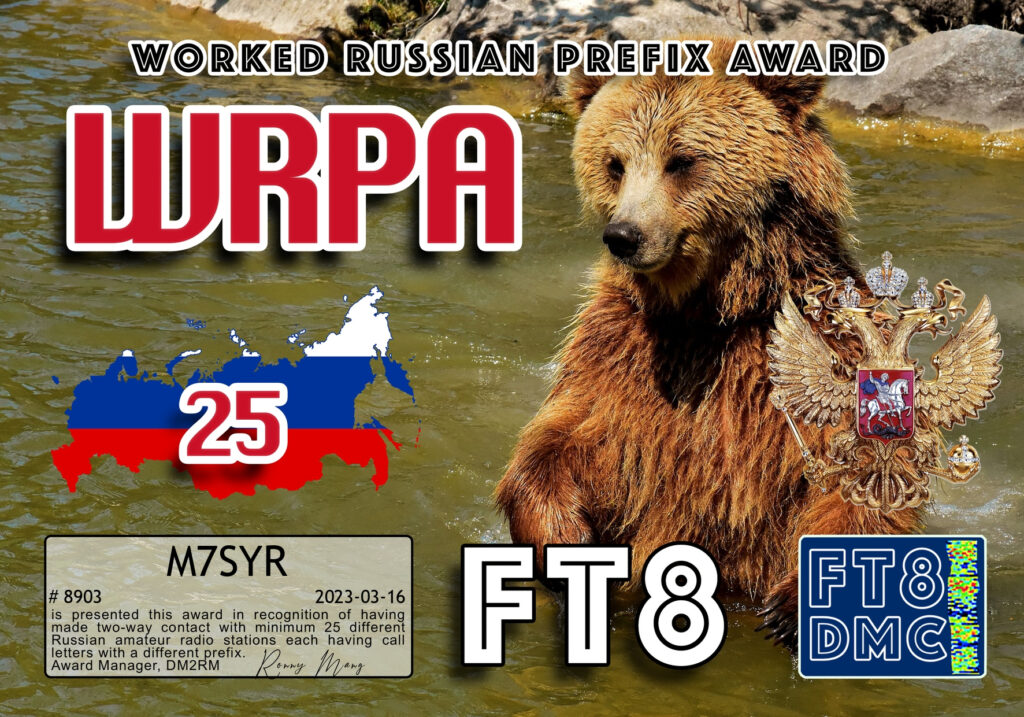
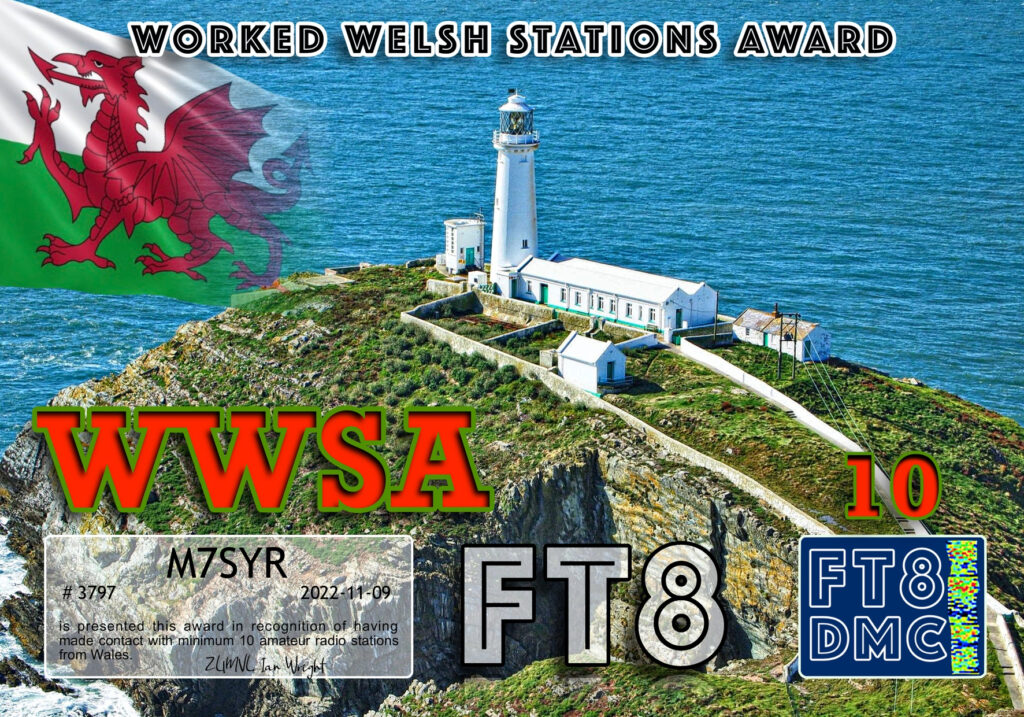
European ROS Club


